Here’s An A-Z List Of 59 Leafy Green Vegetables To Grow

Chris is a gardening writer and nature enthusiast. He graduated from Oxford Brookes University in 2022 with an MA in Psychology. Chris works with the Leeds Green Action Society, helping their food cooperative by growing various fruit and vegetables on their two allotments in Hyde Park, Leeds.
Reviewed By COLIN SKELLY

Colin is a Horticulturist and Horticultural Consultant with experience in a range of practical and managerial roles across heritage, commercial and public horticulture. He holds the Royal Horticultural Society’s Master of Horticulture award and has a particular interest in horticultural ecology and naturalistic planting for habitat and climate resilience.
Contributions From ALAN TITCHMARSH MBE

Alan Titchmarsh is a Broadcaster, Author and renowned Horticulturist with 50 years of industry experience. He is recognisable from several TV shows, including Ground Force, Love Your Garden and Britain’s Best Gardens - and written many books, including The Gardener’s Almanac and My Secret Garden. Alan studied at Hertfordshire College of Agriculture and Kew Royal Botanic Gardens.
IN THIS GUIDE
- 1) Amaranth
- 2) Anise Hyssop
- 3) Beet Greens
- 4) Bellflower
- 5) Black Mustard
- 6) Bomdong
- 7) Borage
- 8) Cabbage
- 9) Carrot
- 10) Celtuce
- 11) Chard
- 12) Charlock
- 13) Chaya
- 14) Chicory
- 15) Choy Sum
- 16) Collard Greens
- 17) Dandelion
- 18) Endive
- 19) Escarole
- 20) Fennel
- 21) Gai Lan
- 22) Garden Cress
- 23) Garden Nasturtium
- 24) Garden Sorrel
- 25) Gynura
- 26) Iceberg Lettuce
- 27) Jersey Cabbage
- 28) Kale
- 29) Katuk
- 30) Komatsuna
- 31) Lagos Spinach
- 32) Lamb’s Quarters
- 33) Maca
- 34) Malabar Spinach
- 35) Mallow
- 36) Moringa
- 37) Musk Mallow
- 38) Mustard Greens
- 39) Napa Cabbage
- 40) Orange Daylily
- 41) Pak Choi
- 42) Palsingat
- 43) Pokeweed
- 44) Quinoa
- 45) Rapini
- 46) Red Cabbage
- 47) Red Leaf Lettuce
- 48) Rocket
- 49) Romaine Lettuce
- 50) Savoy Cabbage
- 51) Shiso
- 52) Smooth Sowthistle
- 53) Spinach
- 54) Sweet Violet
- 55) Tatsoi
- 56) Turnip
- 57) Welsh Onion
- 58) Wild Leeks
- 59) Wild sorrel
- References
Leafy greens go great with so many dishes, whether it’s a tasty salad of mixed lettuce and rocket leaves, or some spinach stirred through a curry to add flavour and colour.
While there are common leaves you’re probably used to, there are tons of others that you may not even have heard of.
“In my garden, I grow early potatoes, onions, climbing French beans, lettuce, spring onions, asparagus, just to name a few,” shares Alan Titchmarsh, Garden Broadcaster.
In this article we’ve rounded up an exciting array of leafy greens for you to try, so whether you’re looking for a specific one or just looking to learn what options are out there, read on.
Here are 59 exciting leafy greens for you to try: who knows, maybe you’ll find your new favourite.
1) Amaranth
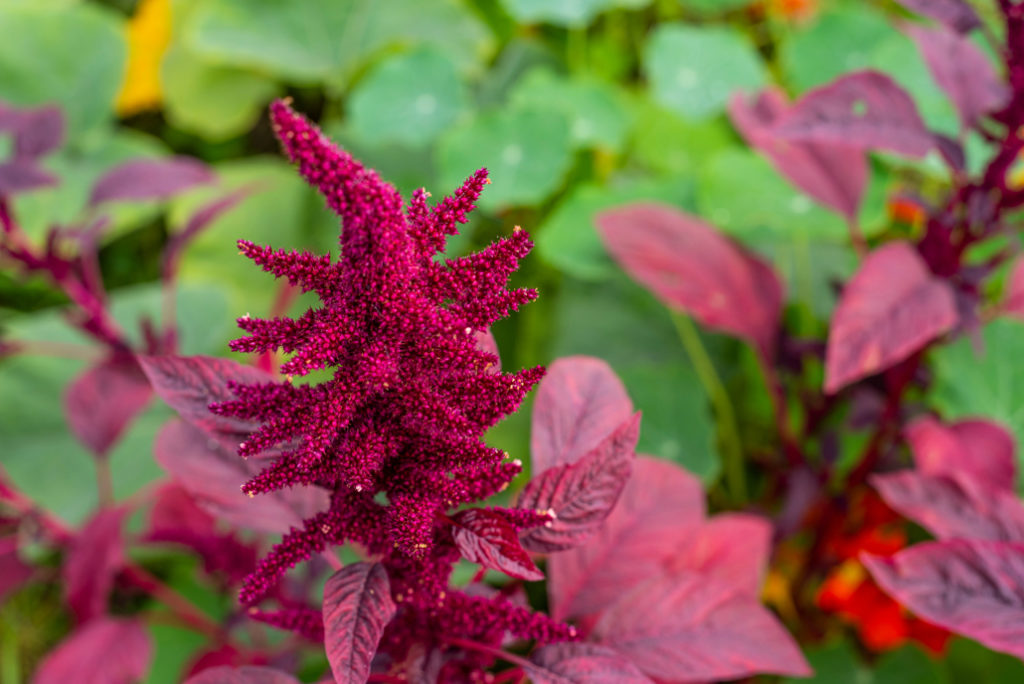
- BOTANICAL NAME: Amaranthus
- COMMON NAME(S): Amaranth / Amour Flower
- HARDINESS RATING: H2
- FLOWERING SEASON(S): Summer / Autumn
- SUNLIGHT: Full Sun
- SOIL PREFERENCE: Chalk, loam, sand; Any pH
- EXPOSURE: Sheltered
Although it can’t be eaten raw, this vegetable is similar to spinach when boiled and is great with butter.
Once sacred to the Aztecs, it’s now well-loved for its rich taste.1Amaranth – May Grain of the Month. (n.d.). The Whole Grains Council. Retrieved March 20, 2023, from https://wholegrainscouncil.org/whole-grains-101/grain-month-calendar/amaranth-may-grain-month
2) Anise Hyssop
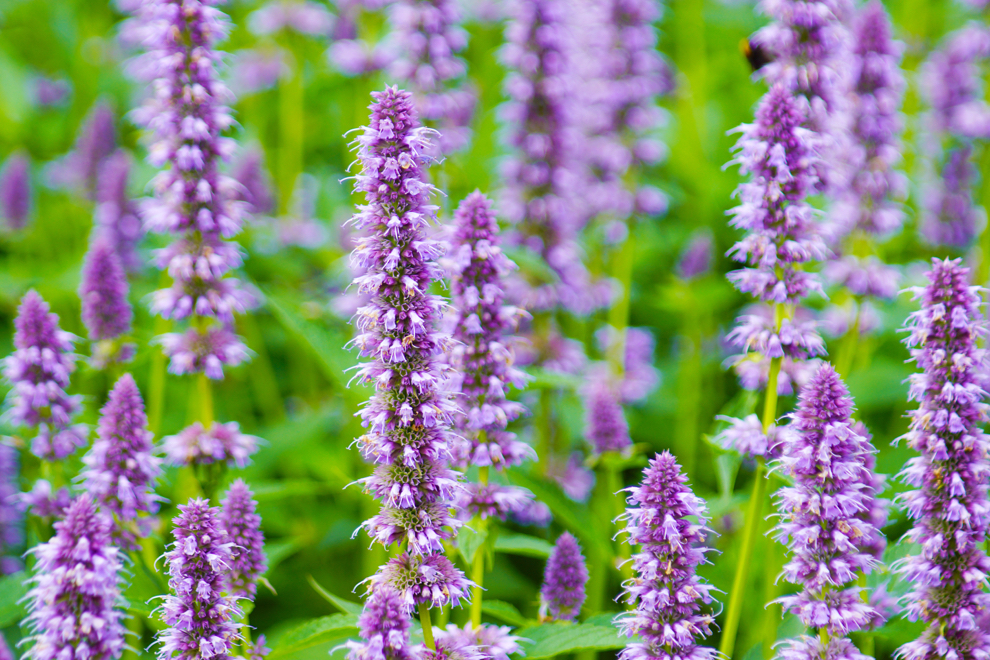
- BOTANICAL NAME: Agastache foeniculum (Pursh) Kuntze
- COMMON NAME(S): Anise Hyssop
- HARDINESS RATING: H3
- FLOWERING SEASON(S): Summer / Autumn
- SUNLIGHT: Full Sun
- SOIL PREFERENCE: Chalk, loam, sand; Any pH
- EXPOSURE: Exposed / Sheltered
As the name suggests, this plant has a liquorice flavour.
You can eat the flowers and the leaves can be eaten cooked or raw.
3) Beet Greens
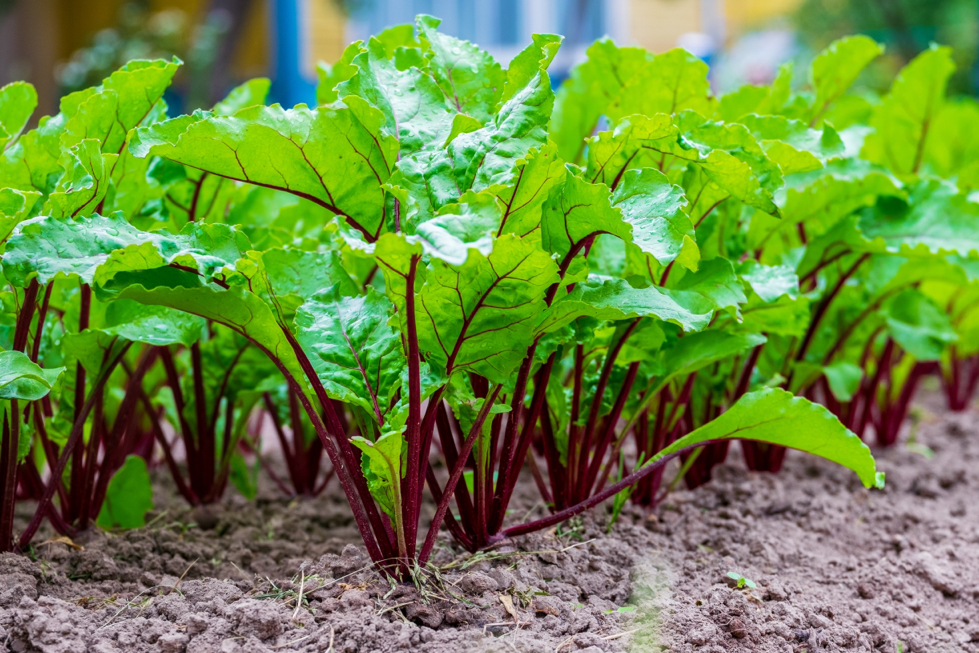
- BOTANICAL NAME: Beta vulgaris
- COMMON NAME(S): Common Beet
- HARDINESS RATING: H3
- SUNLIGHT: Full Sun / Part Shade
- SOIL PREFERENCE: Any soil type; Any pH
- EXPOSURE: Sheltered
Similar flavour profile to a lot of other leafy greens but a little sweeter, and with a distinctive red hue like the beetroot fruit.
4) Bellflower
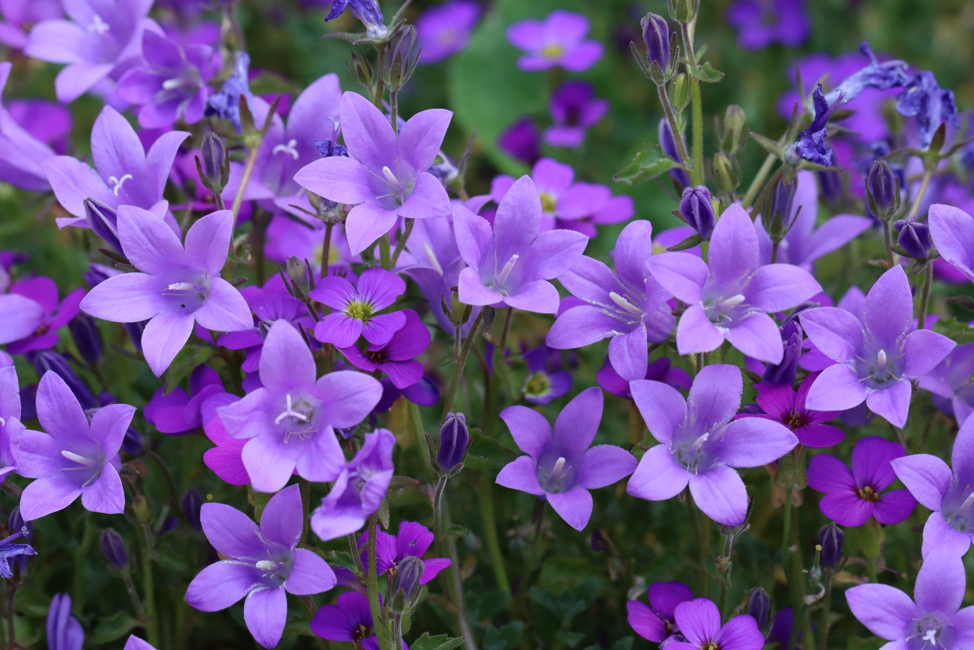
- BOTANICAL NAME: Campanula
- COMMON NAME(S): Bellflower
- HARDINESS RATING: H5
- FLOWERING SEASON(S): Summer
- SUNLIGHT: Full Sun / Part Shade
- SOIL PREFERENCE: Chalk, loam, sand; Any pH
- EXPOSURE: Exposed / Sheltered
Although Bellflower is not technically a vegetable, it works well as a garnish and is a point of interest if foraged with your own hand.
5) Black Mustard
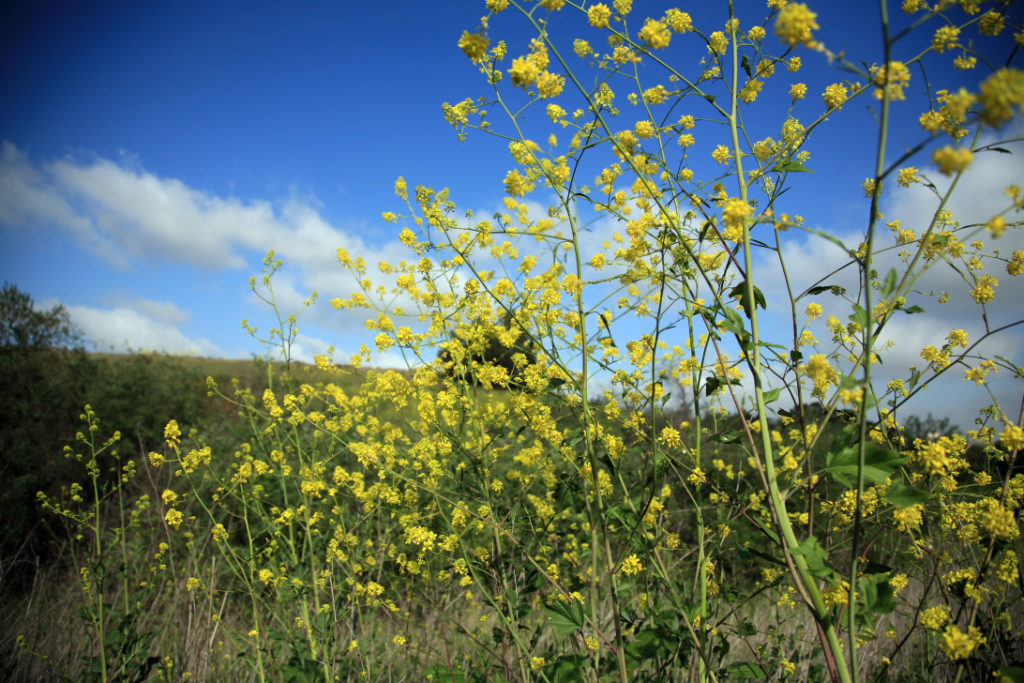
- BOTANICAL NAME: Brassica nigra
- COMMON NAME(S): Black mustard / grocer’s mustard
- HARDINESS RATING: H6
- FLOWERING SEASON(S): Summer / Autumn
- SUNLIGHT: Full Sun
- SOIL PREFERENCE: Any soil type; Alkaline / Neutral pH
- EXPOSURE: Exposed / Sheltered
You’ve probably tried mustard and maybe use mustard seeds in your cooking, but you can eat the leaves of the plant too!
“I grow mustard as a salad crop as it adds a nice peppery tang to salads,” shares Master Horticulturist Colin Skelly.
“Watch out if the crop runs to seed as it will become very hot to taste!”
Black mustard leaves go great in salads.
6) Bomdong
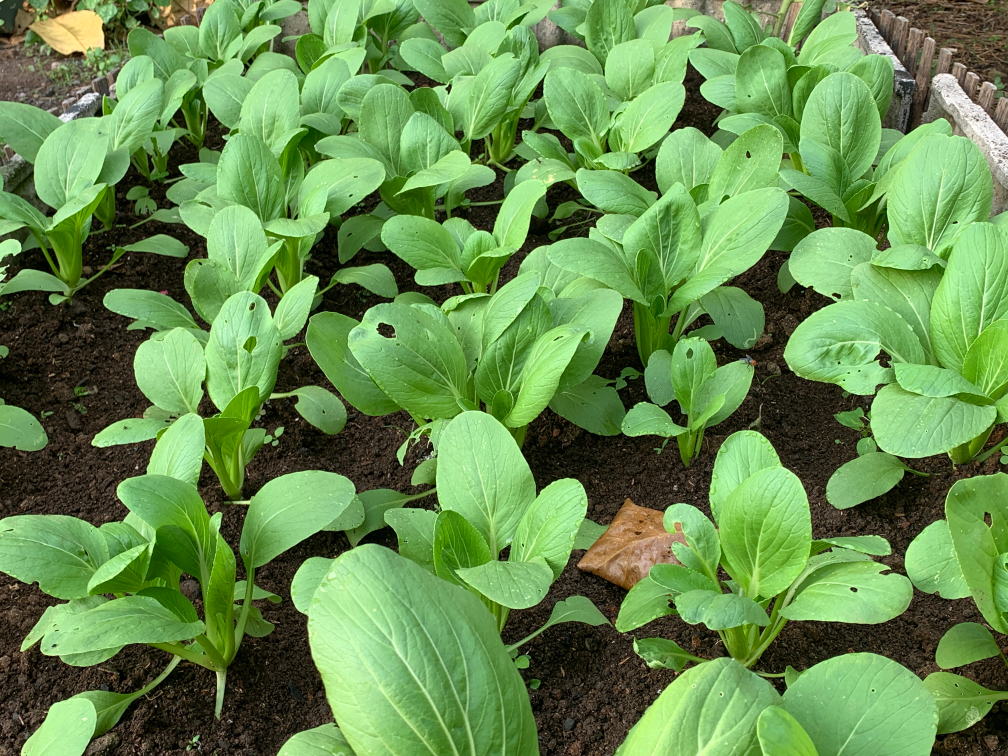
- BOTANICAL NAME: Bomdong
- COMMON NAME(S): Spring Cabbage
- HARDINESS RATING: H5
- FLOWERING SEASON(S): Spring / Summer
- SUNLIGHT: Full Sun / Part Shade
- SOIL PREFERENCE: Any soil type; Any pH
- EXPOSURE: Exposed / Sheltered
An early spring cabbage, Bomdong is often used in Korean cooking as a component of kimchi.
7) Borage
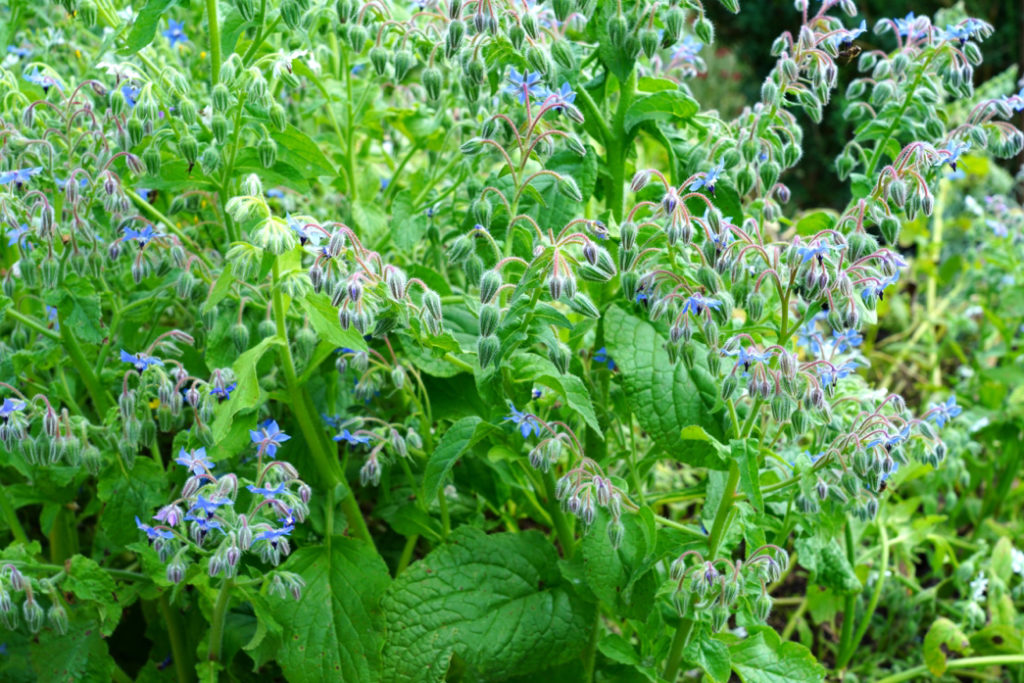
- BOTANICAL NAME: Borago officinalis
- COMMON NAME(S): Borage / Tailwort
- HARDINESS RATING: H5
- FLOWERING SEASON(S): Summer
- SUNLIGHT: Full Sun / Part Shade
- SOIL PREFERENCE: Any soil type; Any pH
- EXPOSURE: Exposed / Sheltered
You can forage borage – isn’t that fun to say? – in spring and summer.
The leaves have a delicate, cucumber-like taste and go well with salads.
8) Cabbage

- BOTANICAL NAME: Brassica oleracea
- COMMON NAME(S): Cabbage
- HARDINESS RATING: H5 (changes with variety)
- FLOWERING SEASON(S): Summer / Autumn
- SUNLIGHT: Full Sun / Part Shade
- SOIL PREFERENCE: Any soil type; Any pH
- EXPOSURE: Sheltered
There are many types of cabbage, and it’s perhaps the most famous brassica.
You’ll likely already know how versatile they are and how tasty they can be when cooked well.
9) Carrot
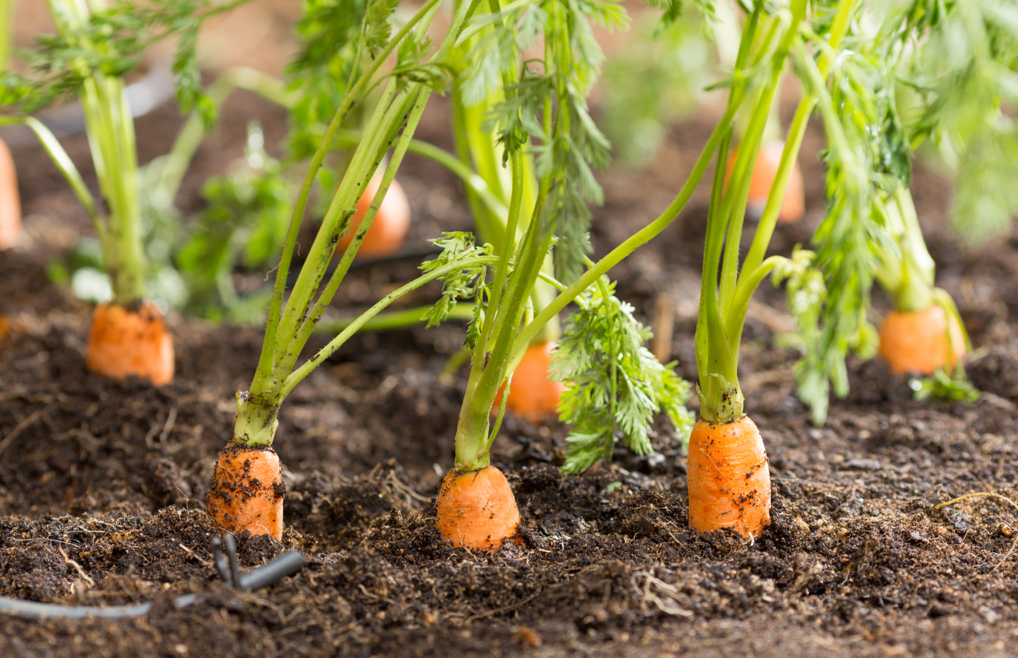
- BOTANICAL NAME: Daucus carota
- COMMON NAME(S): Carrots / Wild Carrots
- HARDINESS RATING: H2
- FLOWERING SEASON(S): Summer
- SUNLIGHT: Full Sun
- SOIL PREFERENCE: Chalk, loam, sand; Alkaline / neutral pH
- EXPOSURE: Exposed / Sheltered
In the same family as coriander, parsley and other herbs, it’s obvious why carrot greens are on this list.
10) Celtuce
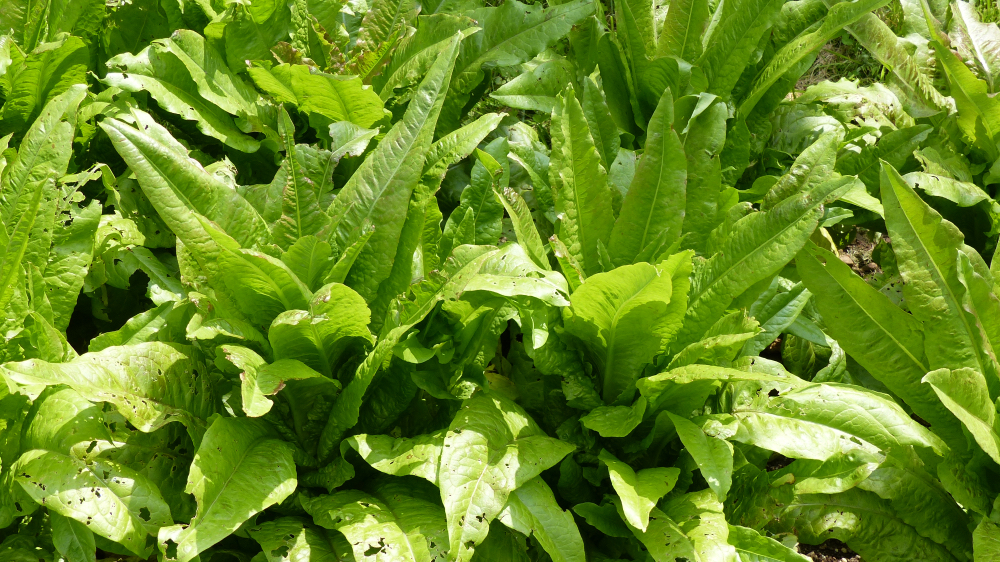
- BOTANICAL NAME: Lactuca sativa
- COMMON NAME(S): Common Lettuce / Celtuce
- HARDINESS RATING: H2
- FLOWERING SEASON(S): Summer
- SUNLIGHT: Full Sun
- SOIL PREFERENCE: Any soil type; Any pH
- EXPOSURE: Exposed / Sheltered
It’s usually the stems that are used in cooking, but the leaves of celtuce are good too.2Anderson, P. (2019, October 12). Cooking with celtuce: the supermodel of vegetables. The Guardian. Retrieved March 20, 2023, from https://www.theguardian.com/food/2019/oct/13/cooking-with-celtuce-the-supermodel-of-vegetables
Just check that they’re fresh enough to use, as often the time taken to import can make them wilt.
11) Chard
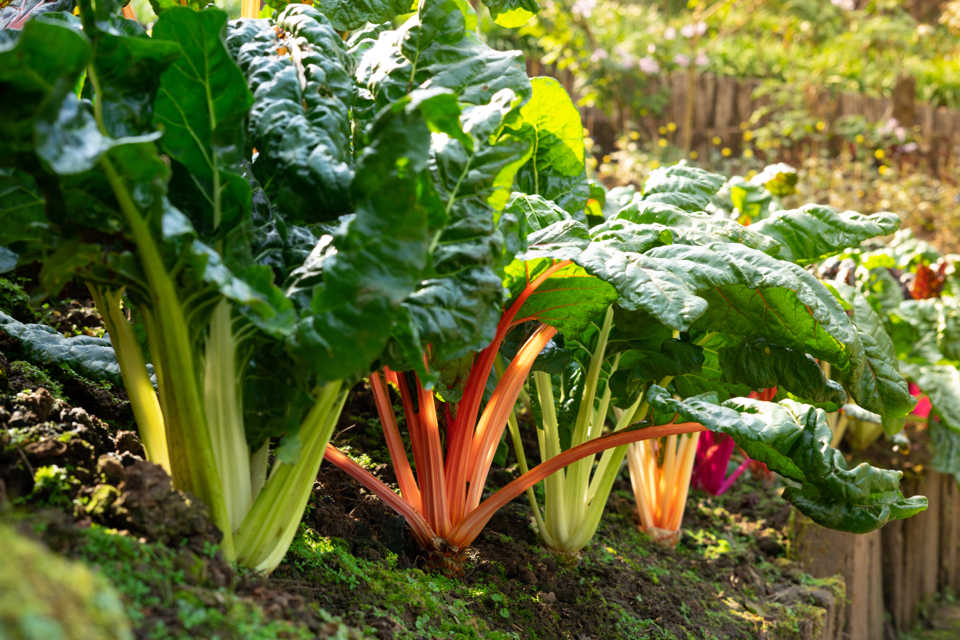
- BOTANICAL NAME: Beta vulgaris subsp. cicla var. flavescens
- COMMON NAME(S): Chard / Swiss Chard
- HARDINESS RATING: H3
- FLOWERING SEASON(S): Spring / Summer
- SUNLIGHT: Full Sun / Part Shade
- SOIL PREFERENCE: Any soil type; Any pH
- EXPOSURE: Sheltered
A classic leafy green, with a characteristic red stem and red-purple colouration in the leaves.
12) Charlock
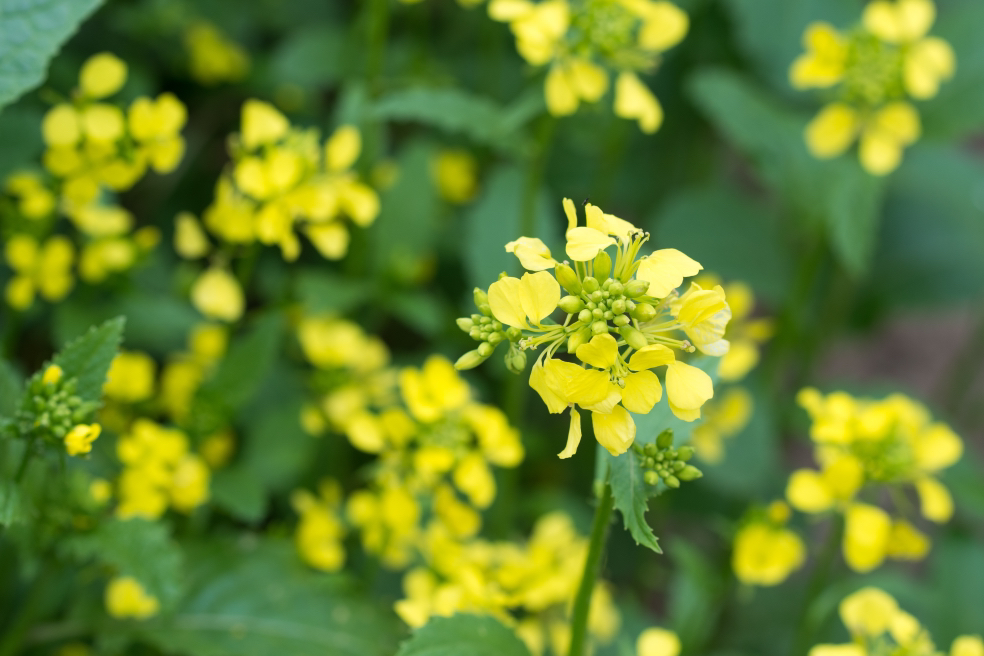
- BOTANICAL NAME: Sinapis arvensis
- COMMON NAME(S): Charlock / Corn Mustard
- HARDINESS RATING: H7
- FLOWERING SEASON(S): Spring / Summer / Autumn
- SUNLIGHT: Full Sun
- SOIL PREFERENCE: Any soil type; Any pH
- EXPOSURE: Exposed / Sheltered
Charlock is also called field mustard or wild mustard, this but it isn’t eaten as commonly these days.
It was used as a famine food during the Great Famine of Ireland.
13) Chaya
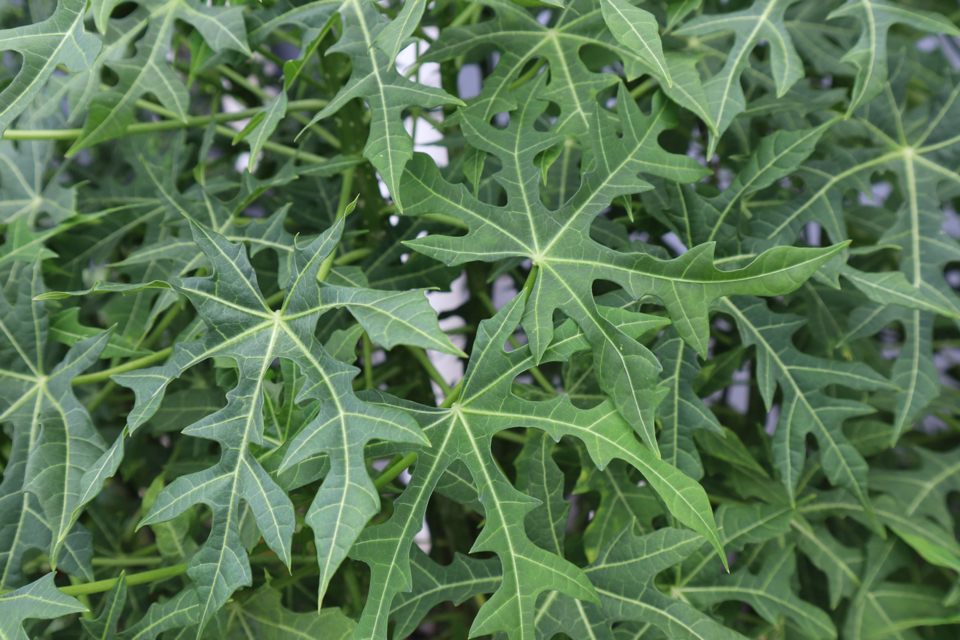
- BOTANICAL NAME: Cnidoscolus chayamansa
- COMMON NAME(S): Chaya / Tree Spinach
- HARDINESS RATING: H3/H4
- FLOWERING SEASON(S): Summer / Autumn
- SUNLIGHT: Full Sun / Part Shade
- SOIL PREFERENCE: Any soil type; Any pH
- EXPOSURE: Sheltered
It’s recommended to boil this leafy green before eating, as the raw leaves are not ready to eat.3Chaya – High Nutrition Perennial. (n.d.). US Aid. Retrieved March 20, 2023, from https://pdf.usaid.gov/pdf_docs/PA00K93C.pdf
14) Chicory
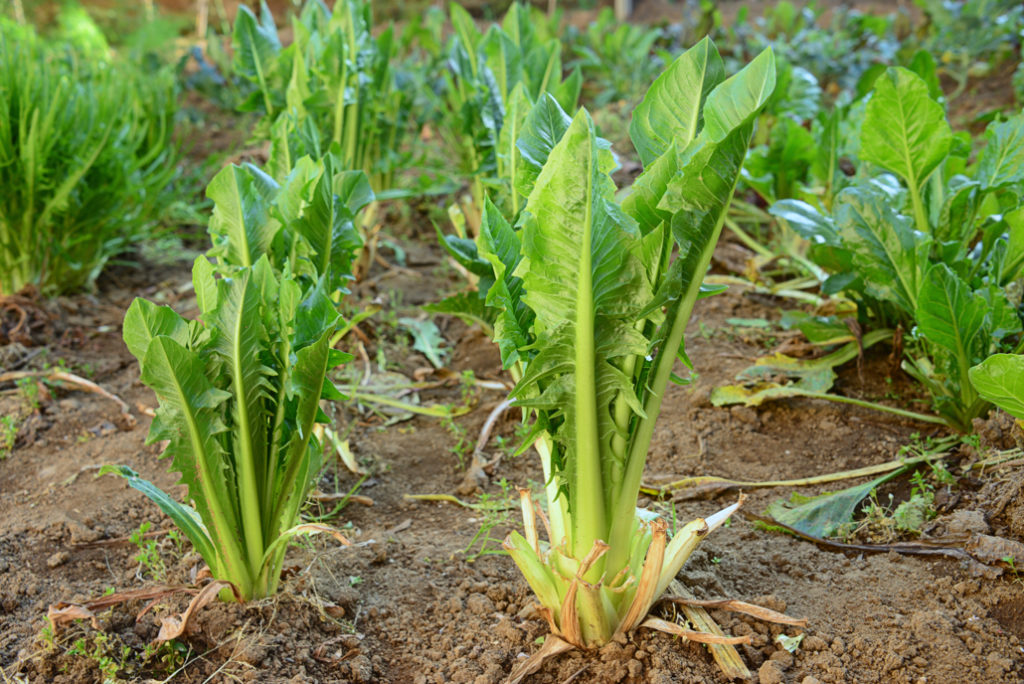
- BOTANICAL NAME: Cichorium intybus
- COMMON NAME(S): Chicory
- HARDINESS RATING: H5
- FLOWERING SEASON(S): Summer
- SUNLIGHT: Full Sun
- SOIL PREFERENCE: Chalk, loam, sand; Any pH
- EXPOSURE: Exposed / Sheltered
Chicory is used for flavourings and you can even make a coffee-like drink from the ground plant.
The leaves are edible too.
15) Choy Sum
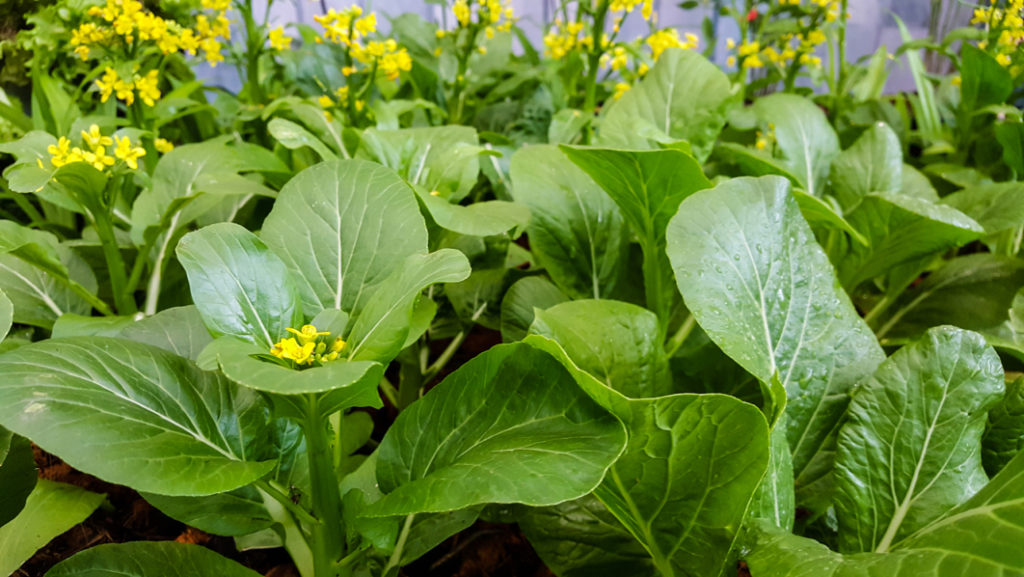
- BOTANICAL NAME: Brassica parachinensis
- COMMON NAME(S): Bok Choy / Chinese Cabbage
- HARDINESS RATING: H5
- FLOWERING SEASON(S): Summer
- SUNLIGHT: Full Sun / Part Shade
- SOIL PREFERENCE: Any soil type; Alkaline / Neutral pH
- EXPOSURE: Exposed / Sheltered
Also called Chinese flowering cabbage, the leaves of this plant are popular in Chinese cooking – especially in stir-fries.
16) Collard Greens
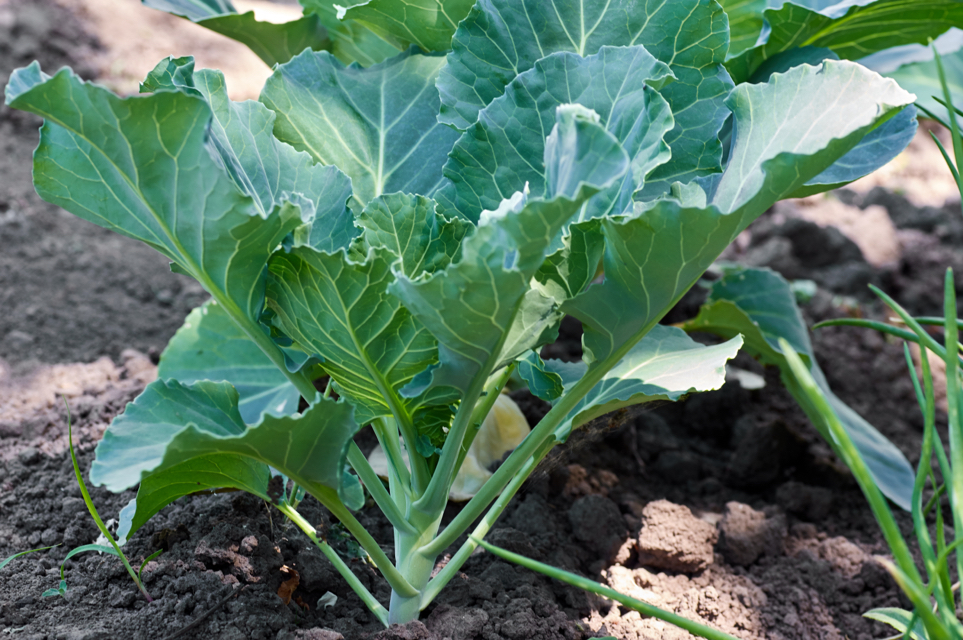
- BOTANICAL NAME: Brassica oleracea var. viridis
- COMMON NAME(S): Collard
- HARDINESS RATING: H4
- FLOWERING SEASON(S): Spring
- SUNLIGHT: Full Sun / Part Shade
- SOIL PREFERENCE: Any soil type; Any pH
- EXPOSURE: Exposed / Sheltered
A mainstay of southern US cuisine, collard greens are similar to cabbage and kale.
The tough stem is best removed before cooking.
17) Dandelion
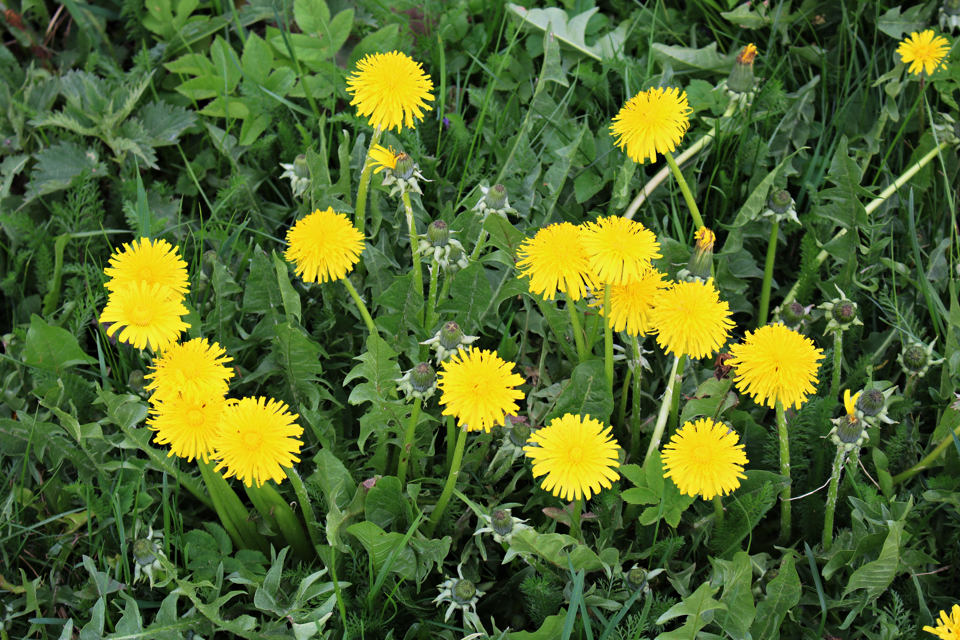
- BOTANICAL NAME: Taraxacum officinalis
- COMMON NAME(S): Dandelion
- HARDINESS RATING: H7
- FLOWERING SEASON(S): Summer / Autumn
- SUNLIGHT: Full Sun / Part Shade
- SOIL PREFERENCE: Any soil type; Any pH
- EXPOSURE: Exposed / Sheltered
Although dandelions are considered a weed, their leaves can be used in all sorts of things.
They get more bitter as they age so prioritise young leaves for cooking.4Brooks Vinton, S. (2018, August 28). How to Eat Dandelions. FoodPrint. Retrieved March 20, 2023, from https://foodprint.org/blog/how-to-eat-dandelions/
18) Endive
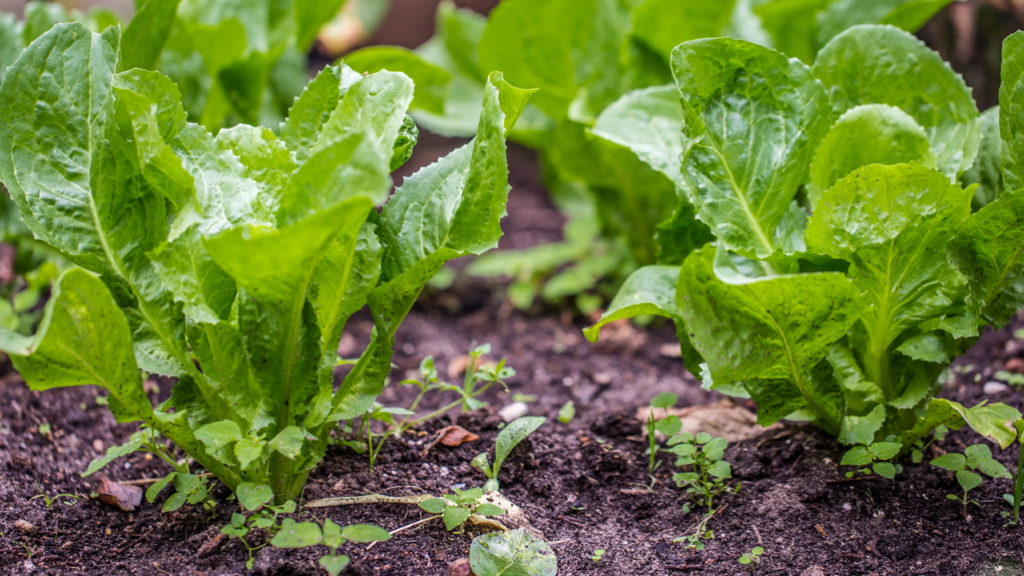
- BOTANICAL NAME: Cichorium endivia
- COMMON NAME(S): Endive
- HARDINESS RATING: H3
- SUNLIGHT: Part Shade
- SOIL PREFERENCE: Any soil type; Any pH
- EXPOSURE: Sheltered
Endive is great raw or cooked.
Crispy raw endive works well in salads and the mellower flavour when cooked makes it a great garnish.
19) Escarole
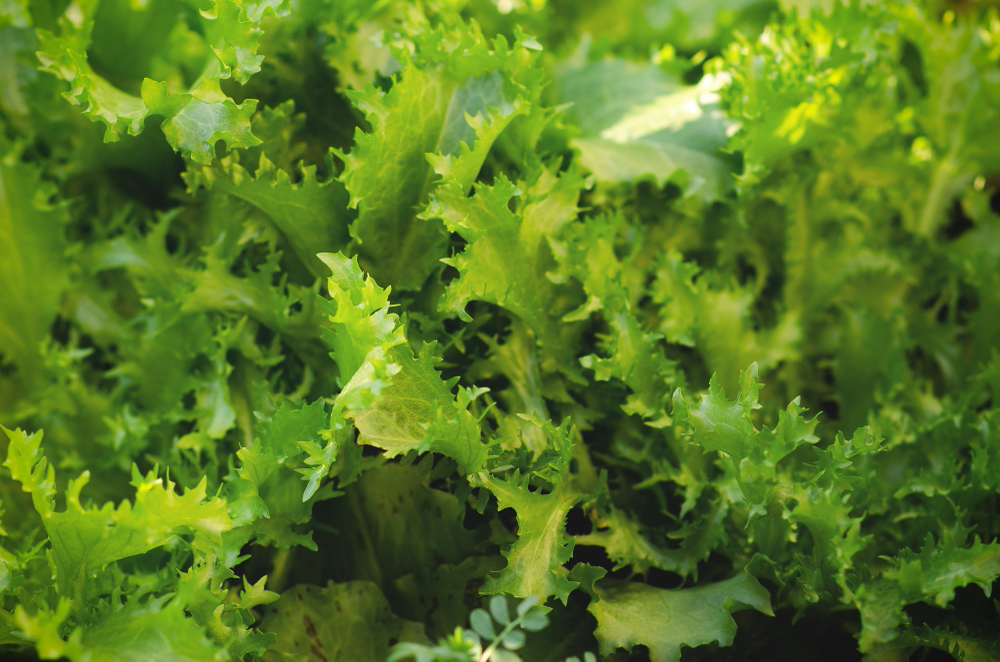
- BOTANICAL NAME: Cichorium endivia ‘latifolium’
- COMMON NAME(S): Escarole / Curly Endive
- HARDINESS RATING: H3
- SUNLIGHT: Part Shade
- SOIL PREFERENCE: Any soil type; Any pH
- EXPOSURE: Sheltered
When eaten raw, escarole is similar to endive, and it also loses bitterness when cooked.
More common in Italian cooking than British.
20) Fennel
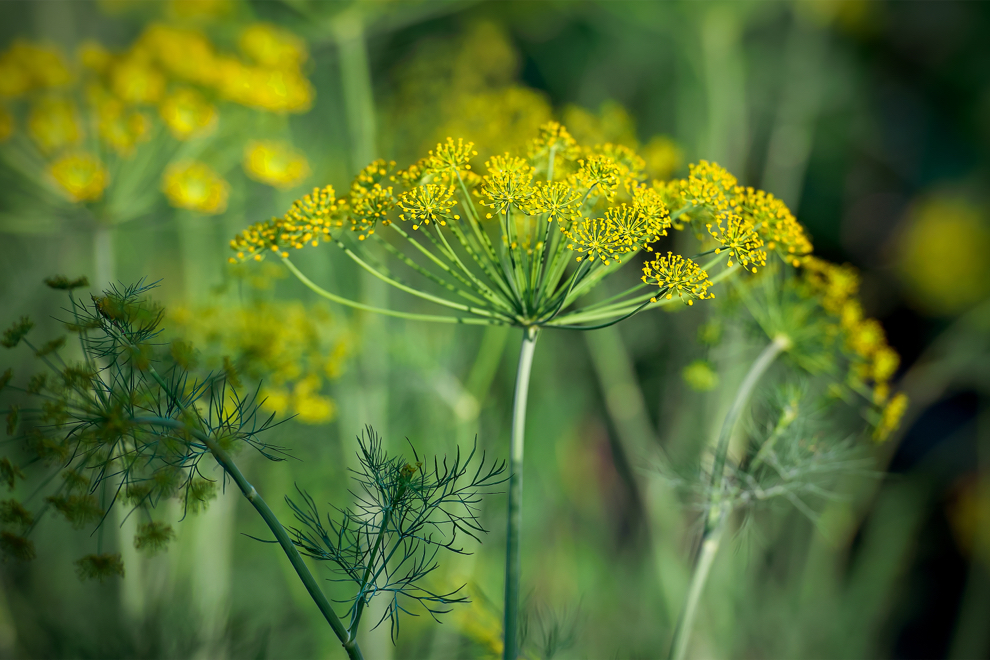
- BOTANICAL NAME: Foeniculum vulgare
- COMMON NAME(S): Common Fennel / Fennel
- HARDINESS RATING: H5
- FLOWERING SEASON(S): Summer
- SUNLIGHT: Full Sun / Part Shade
- SOIL PREFERENCE: Any soil type; Any pH
- EXPOSURE: Sheltered
The fennel bulb is most commonly used in cooking, in fact, you’ll often buy it with the leaves removed, but the leaves are also tasty.
21) Gai Lan
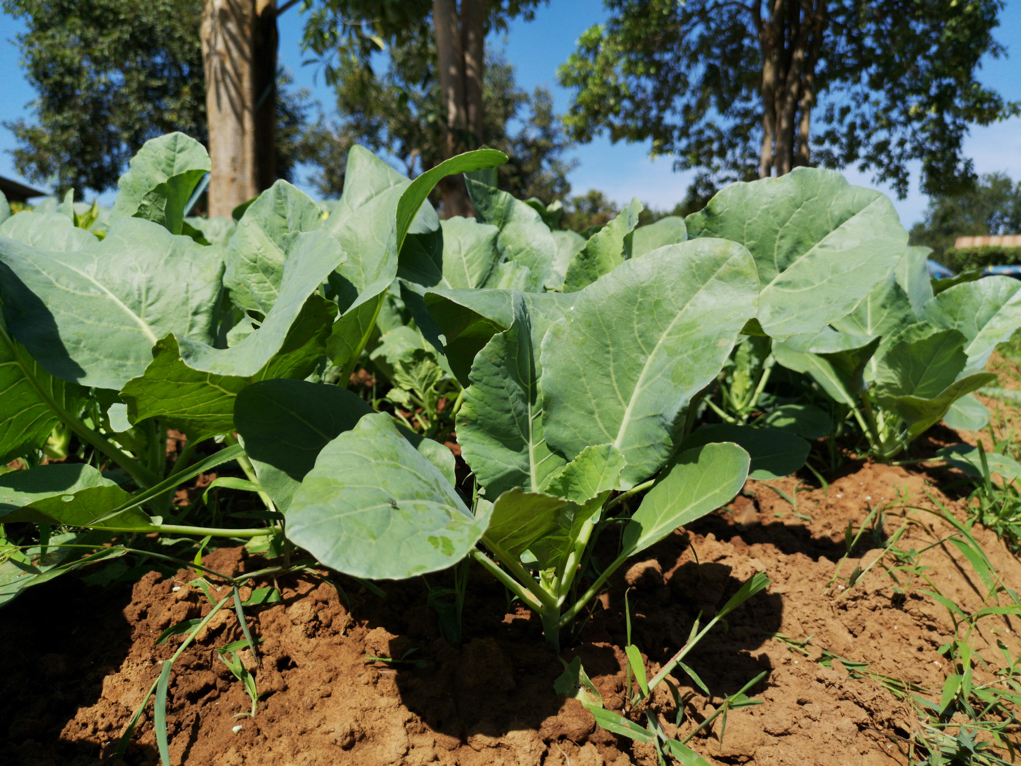
- BOTANICAL NAME: Brassica oleracea
- COMMON NAME(S): Kai Lan / Chinese Broccoli / Gai Lan
- HARDINESS RATING: H5
- FLOWERING SEASON(S): Summer
- SUNLIGHT: Full Sun
- SOIL PREFERENCE: Any soil type; Alkaline / Neutral pH
- EXPOSURE: Exposed / Sheltered
Gai lan is also known as Chinese broccoli and behaves in quite a similar way.
The stalks and florets are most commonly eaten but you can also eat the leaves.
22) Garden Cress
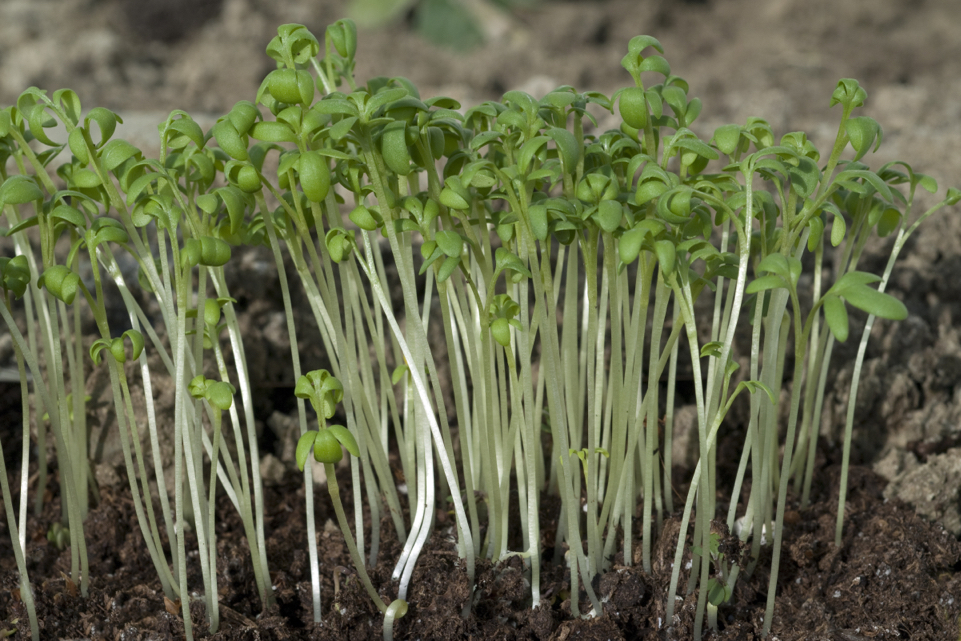
- BOTANICAL NAME: Lepidium sativum
- COMMON NAME(S): Garden Cress
- HARDINESS RATING: H7
- FLOWERING SEASON(S): Spring / Summer
- SUNLIGHT: Full Sun / Part Shade
- SOIL PREFERENCE: Clay or loam; Any pH
- EXPOSURE: Exposed / Sheltered
Cress leaves may be tiny but they’re distinctly edible and pack a characteristically peppery punch.
23) Garden Nasturtium
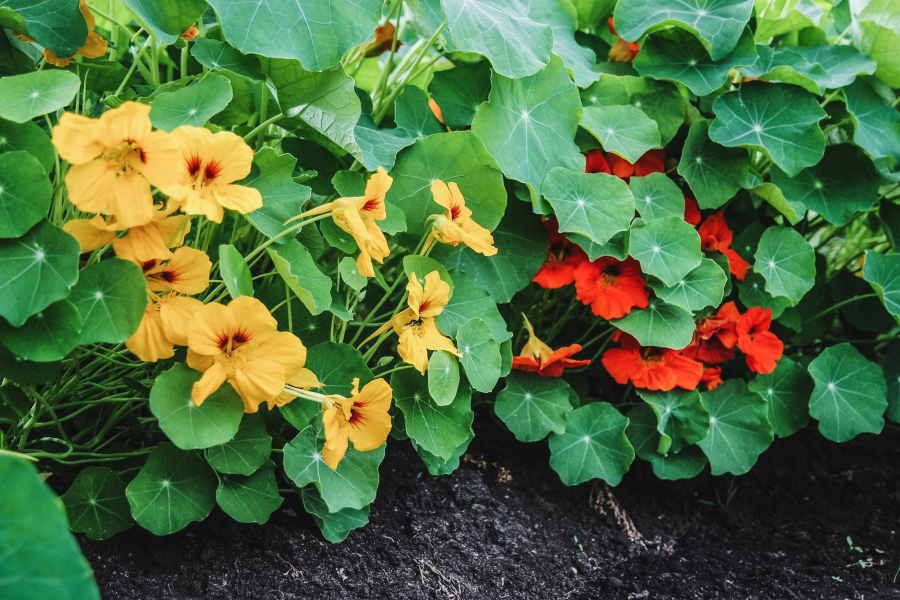
- BOTANICAL NAME: Tropaeolum majus
- COMMON NAME(S): Garden Nasturtium / Indian Cress
- HARDINESS RATING: H3
- FLOWERING SEASON(S): Summer / Autumn
- SUNLIGHT: Full Sun
- SOIL PREFERENCE: Chalk, loam, sand; Any pH
- EXPOSURE: Exposed / Sheltered
This plant’s name means ‘nose twister’ – a nod to the peppery punch they pack.
Its flowers, leaves and seeds are all edible.
24) Garden Sorrel
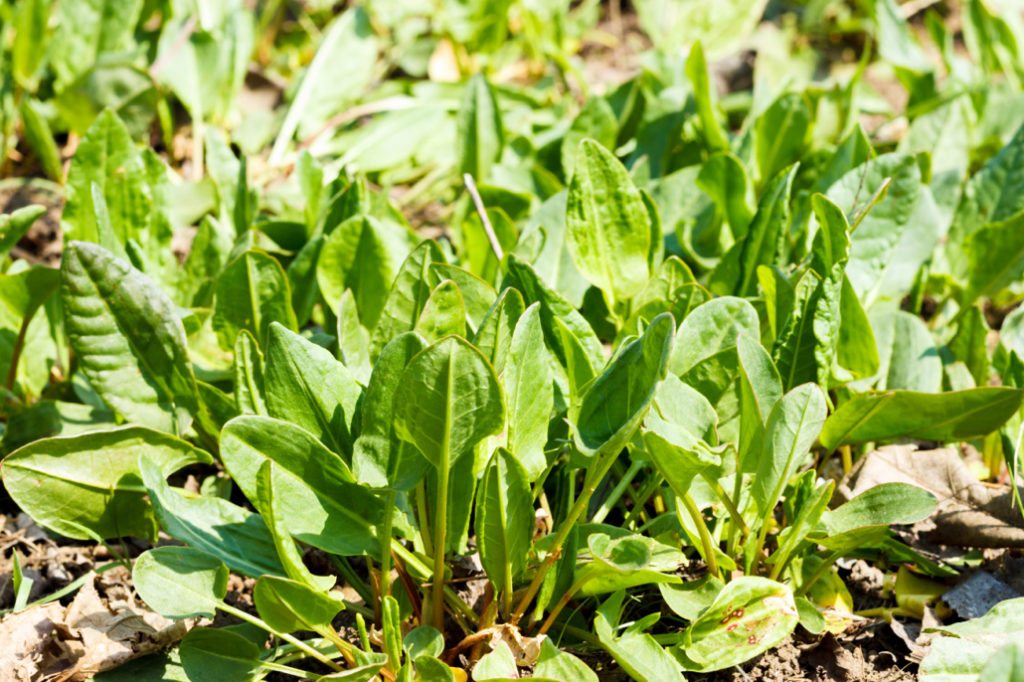
- BOTANICAL NAME: Rumex scutatus
- COMMON NAME(S): Garden Sorrel / French Sorrel
- HARDINESS RATING: H7
- FLOWERING SEASON(S): Summer
- SUNLIGHT: Full Sun / Part Shade
- SOIL PREFERENCE: Any soil type; Any pH
- EXPOSURE: Exposed / Sheltered
Spicy when raw and mellower when cooked, sorrel goes great as a garnish.
25) Gynura
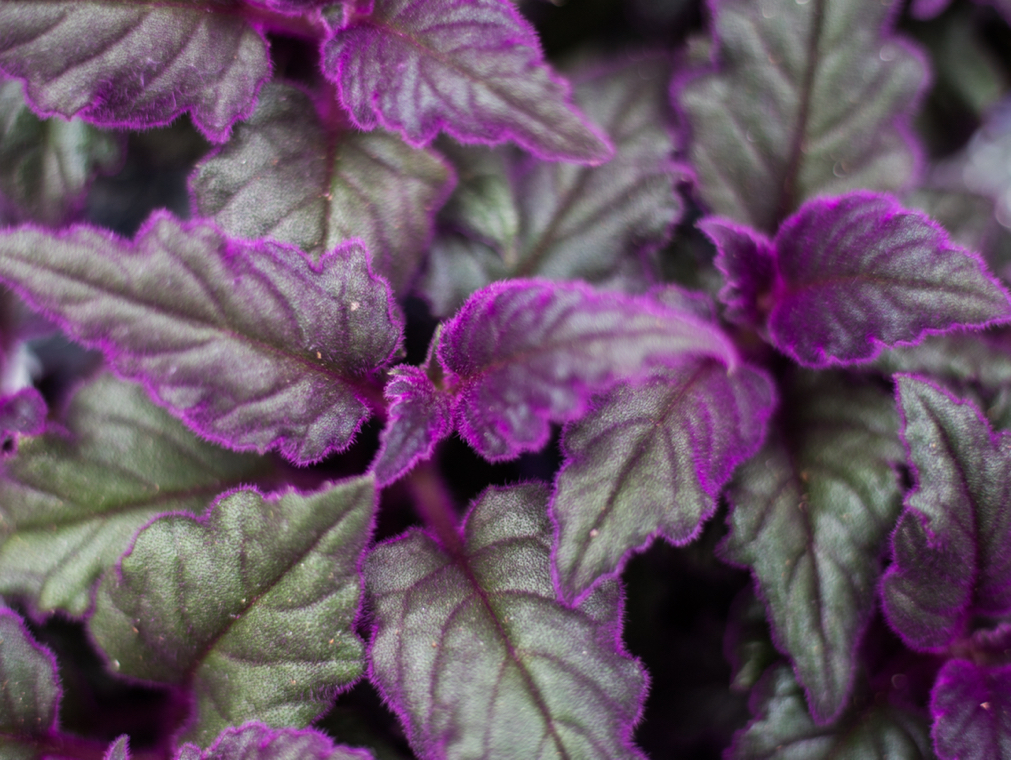
- BOTANICAL NAME: Gynura aurantiaca
- COMMON NAME(S): Gynura / Purple Velvet Plant
- HARDINESS RATING: H1B
- FLOWERING SEASON(S): Winter
- SUNLIGHT: Part Shade
- SOIL PREFERENCE: Loam; Any pH
- EXPOSURE: Sheltered
Also known as longevity spinach, these leaves can be eaten raw, made into tea, and more.
26) Iceberg Lettuce
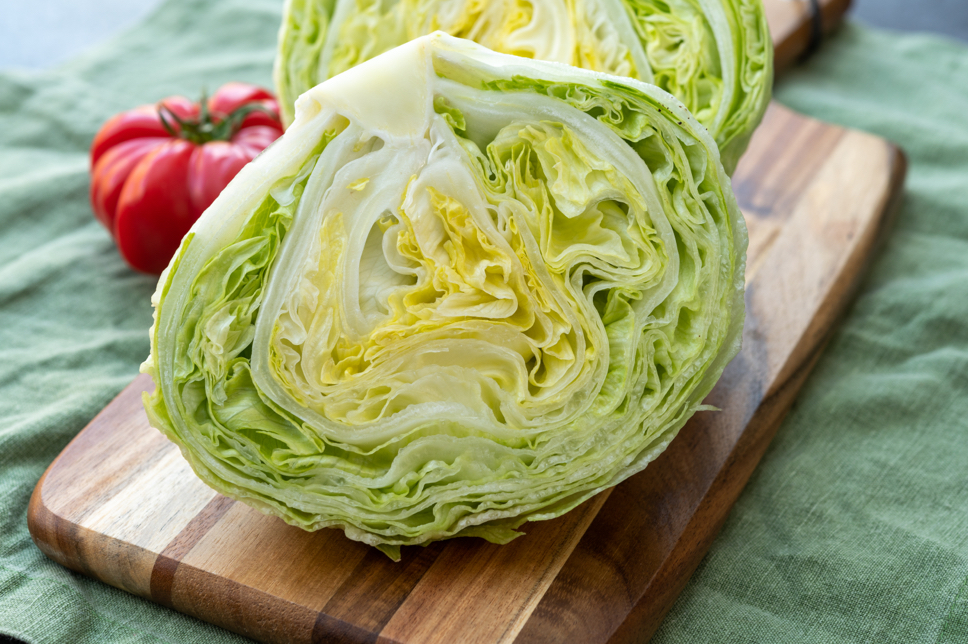
- BOTANICAL NAME: Lactuca sativa ‘Iceberg’
- COMMON NAME(S): Iceberg Lettuce / Crisphead
- HARDINESS RATING: H2
- SUNLIGHT: Full Sun
- SOIL PREFERENCE: Any soil type; Any pH
- EXPOSURE: Exposed / Sheltered
Does the iceberg lettuce need any introduction?
These little leaves find their way into pretty much every salad in the country.
27) Jersey Cabbage

- BOTANICAL NAME: Brassica oleracea longata
- COMMON NAME(S): Jersey Cabbage
- HARDINESS RATING: H7
- FLOWERING SEASON(S): Summer / Autumn
- SUNLIGHT: Full Sun / Part Shade
- SOIL PREFERENCE: Any soil type; Alkaline / Neutral pH
- EXPOSURE: Exposed / Sheltered
This variety of cabbage is native to the Channel Islands, hence the name.
Eat raw or cooked as with any cabbage.
28) Kale
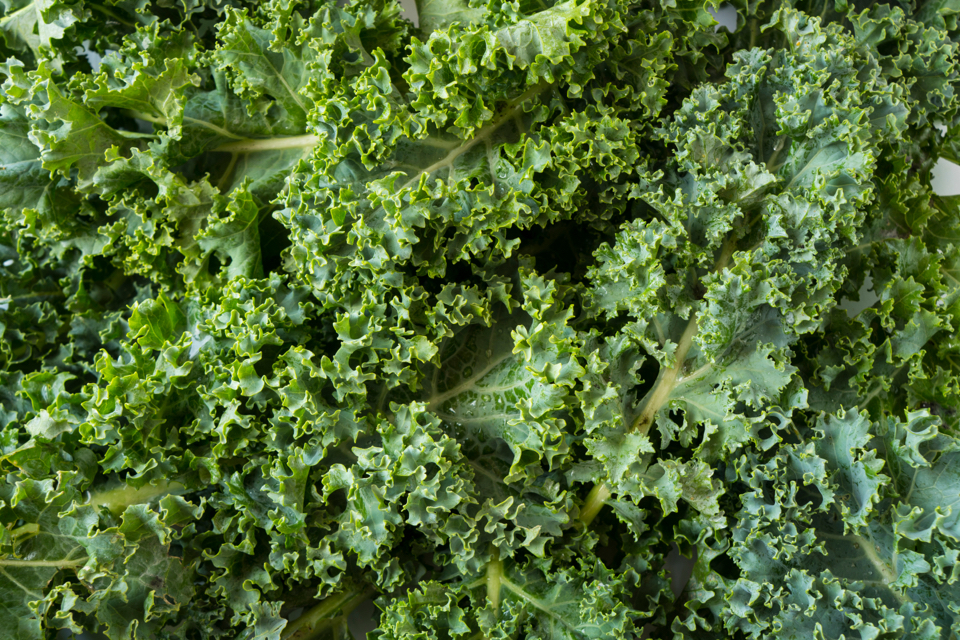
- BOTANICAL NAME: Brassica oleracea
- COMMON NAME(S): Kale
- HARDINESS RATING: H7
- FLOWERING SEASON(S): Summer / Autumn
- SUNLIGHT: Full Sun
- SOIL PREFERENCE: Any soil type; Alkaline / Neutral pH
- EXPOSURE: Exposed / Sheltered
A favourite amongst many, kale has made quite a reputation for itself in recent years.
It’s easy to see why though: it’s delicious.
29) Katuk
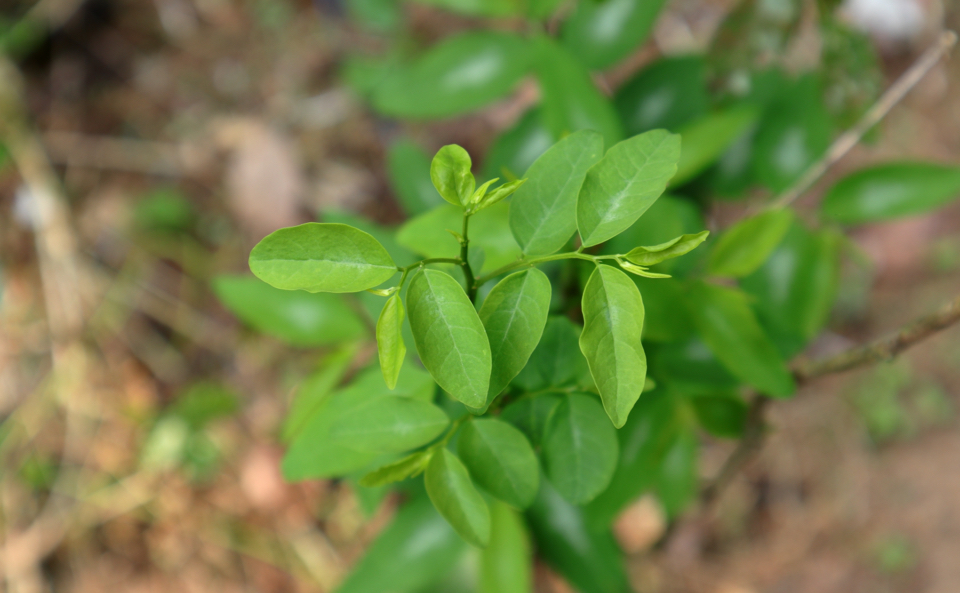
- BOTANICAL NAME: Sauropus androgynus
- COMMON NAME(S): Katuk
- HARDINESS RATING: H3
- FLOWERING SEASON(S): Summer / Autumn
- SUNLIGHT: Full Sun / Part Shade
- SOIL PREFERENCE: Clay, loam, sand; Any pH
- EXPOSURE: Sheltered
Popular in Asia cooked or raw, katuk is one to get to know due to the tastiness of its leaves.5Katuk. (2015). FGCU Food Forest: Plant Database. Retrieved March 20, 2023, from https://www.fgcu.edu/cas/communityimpact/foodforest/files/katuk-ada.pdf
30) Komatsuna
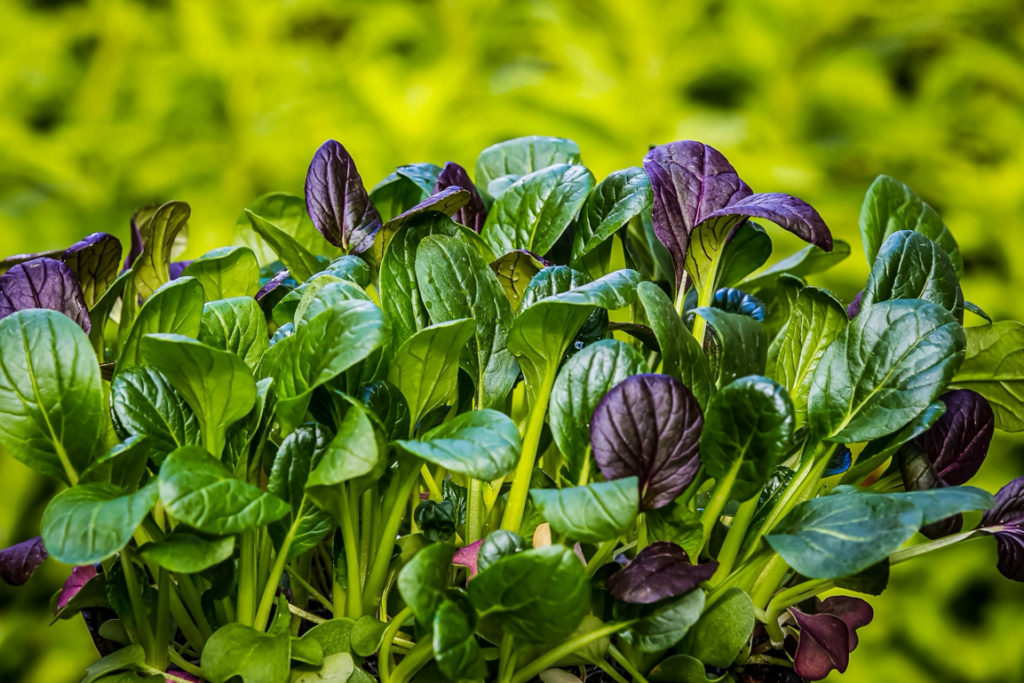
- BOTANICAL NAME: Brassica rapa var. perviridis
- COMMON NAME(S): Komatsuna / Japanese Mustard Spinach
- HARDINESS RATING: H3
- FLOWERING SEASON(S): Summer
- SUNLIGHT: Full Sun
- SOIL PREFERENCE: Clay, loam, sand; Any pH
- EXPOSURE: Sheltered
Japanese mustard spinach is a brassica variety that’s especially popular in Japan and Taiwan.
It lends itself to a wide variety of dishes.
31) Lagos Spinach
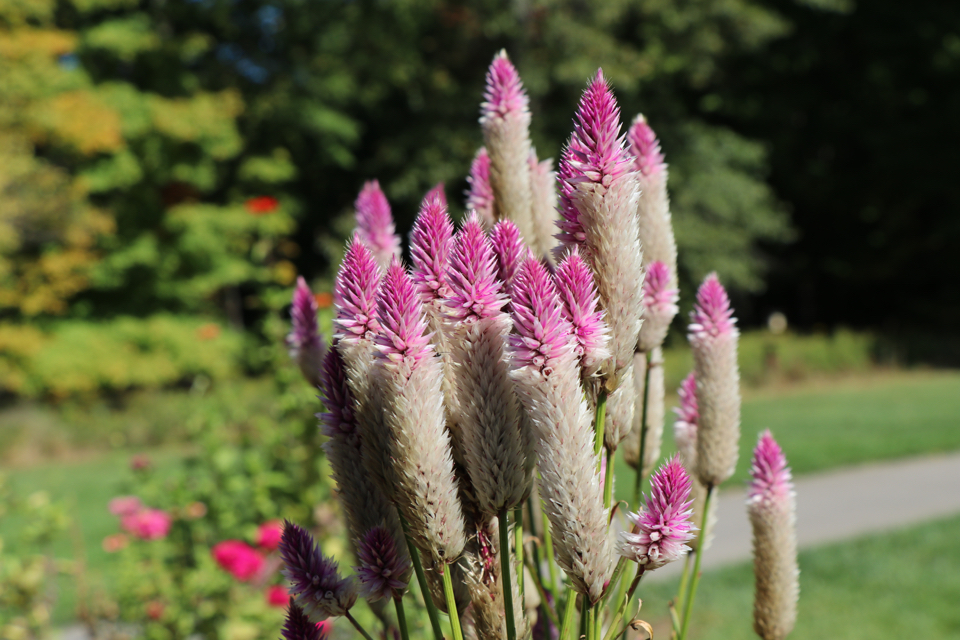
- BOTANICAL NAME: Celosia argentea var. argentea
- COMMON NAME(S): Efo Shoko / Lagos Spinach
- HARDINESS RATING: H2
- FLOWERING SEASON(S): Summer / Autumn
- SUNLIGHT: Full Sun
- SOIL PREFERENCE: Chalk, loam, sand; Any pH
- EXPOSURE: Sheltered
Efo Shoko is a leafy green that’s especially popular in, you guessed it, Nigerian cuisine.
32) Lamb’s Quarters
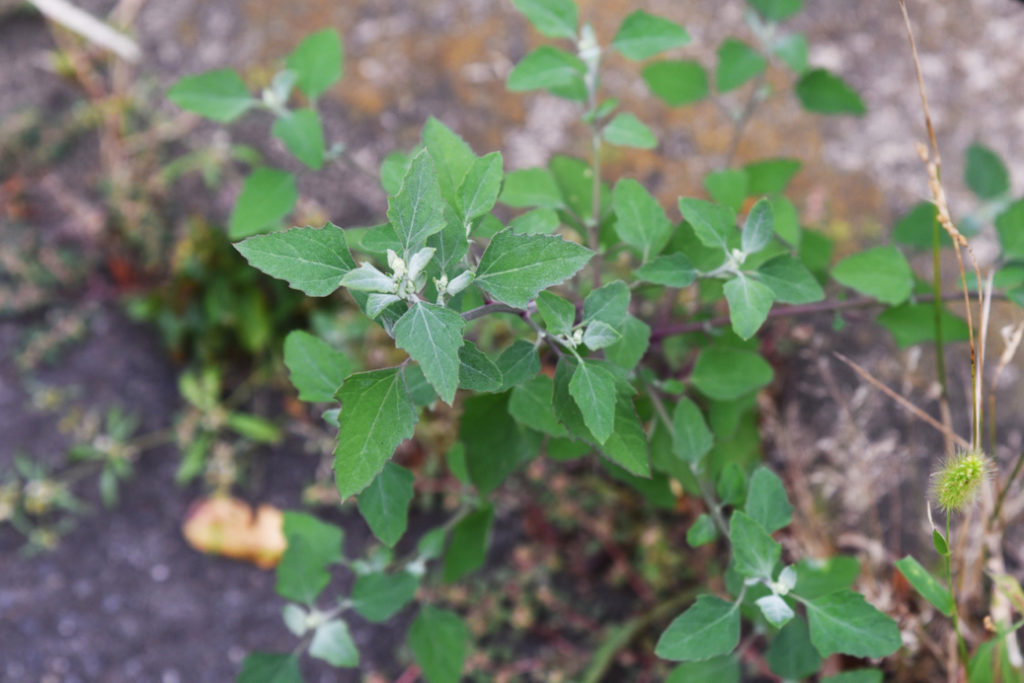
- BOTANICAL NAME: Chenopodium album
- COMMON NAME(S): Lamb’s Quarters / Bacon Weed / Common Goosefoot
- HARDINESS RATING: H7
- FLOWERING SEASON(S): Summer / Autumn
- SUNLIGHT: Full Sun / Part Shade
- SOIL PREFERENCE: Any soil type; Any pH
- EXPOSURE: Exposed / Sheltered
Another plant that’s considered a weed in a lot of circles, lamb’s quarters, or white goosefoot, is edible if you rinse the powdery residue from the leaves.6Lamb’s Quarters and Orach. (2021, March 31). FoodPrint. Retrieved March 20, 2023, from https://foodprint.org/real-food/lambs-quarters/
33) Maca
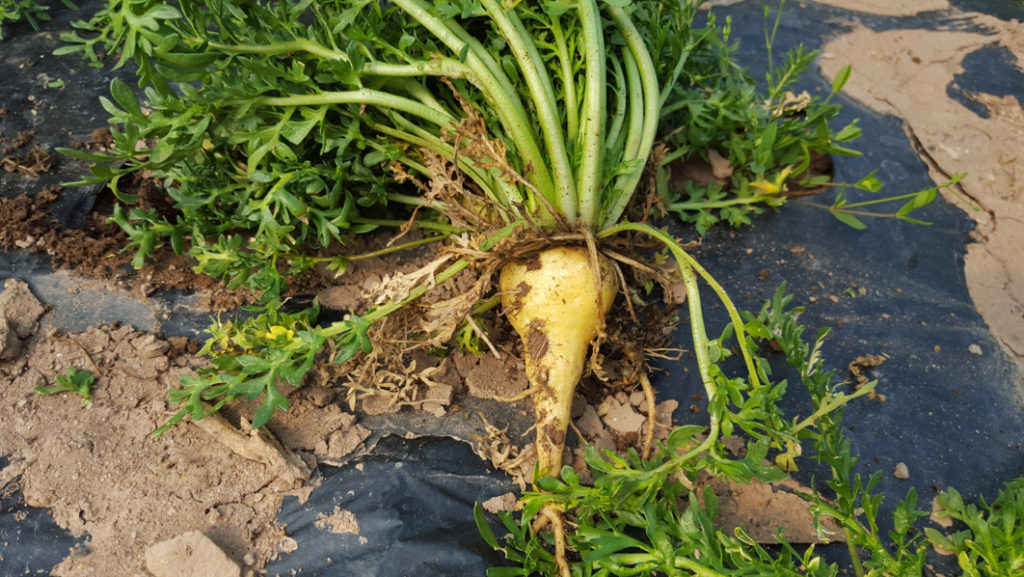
- BOTANICAL NAME: lepidium meyenii
- COMMON NAME(S): Maca / Peruvian Ginseng
- HARDINESS RATING: H6
- FLOWERING SEASON(S): Summer
- SUNLIGHT: Full Sun / Part Shade
- SOIL PREFERENCE: Clay, loam, sand; Any pH
- EXPOSURE: Sheltered
Maca leaves hail from South America and are best cooked before being consumed.
34) Malabar Spinach
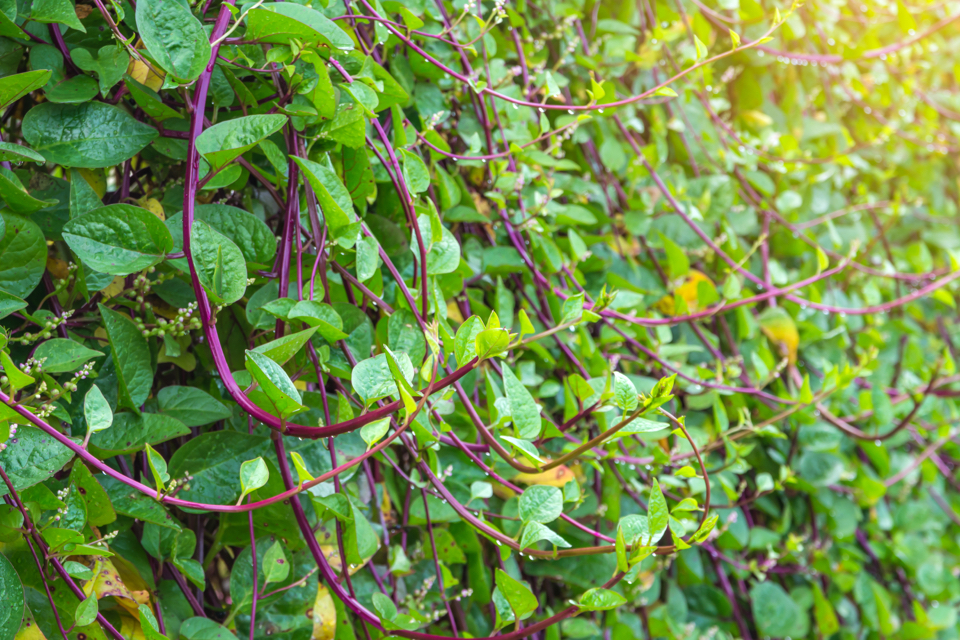
- BOTANICAL NAME: Basella alba
- COMMON NAME(S): Malabar Spinach / Ceylon Spinach
- HARDINESS RATING: H1C
- FLOWERING SEASON(S): Summer / Autumn
- SUNLIGHT: Full Sun
- SOIL PREFERENCE: Clay, loam, sand; Any pH
- EXPOSURE: Sheltered
This variety can be eaten raw, boiled, steamed, fried and more.
35) Mallow
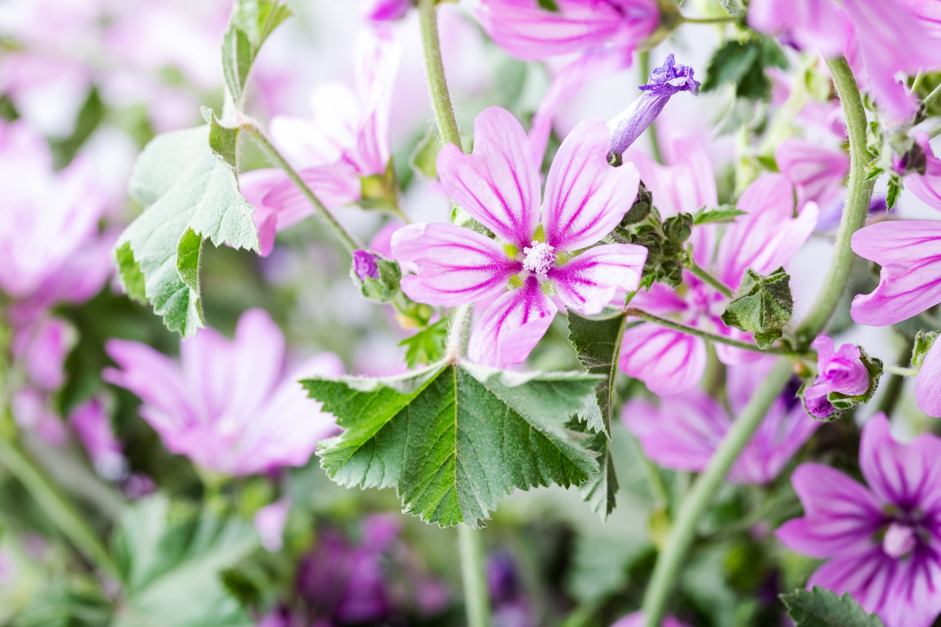
- BOTANICAL NAME: Malva sylvestris
- COMMON NAME(S): Mallow / Common Mallow
- HARDINESS RATING: H5
- FLOWERING SEASON(S): Summer / Autumn
- SUNLIGHT: Full Sun
- SOIL PREFERENCE: Any soil type; Any pH
- EXPOSURE: Sheltered
The seeds and leaves of mallow are edible, making this a firm favourite for foragers.
36) Moringa
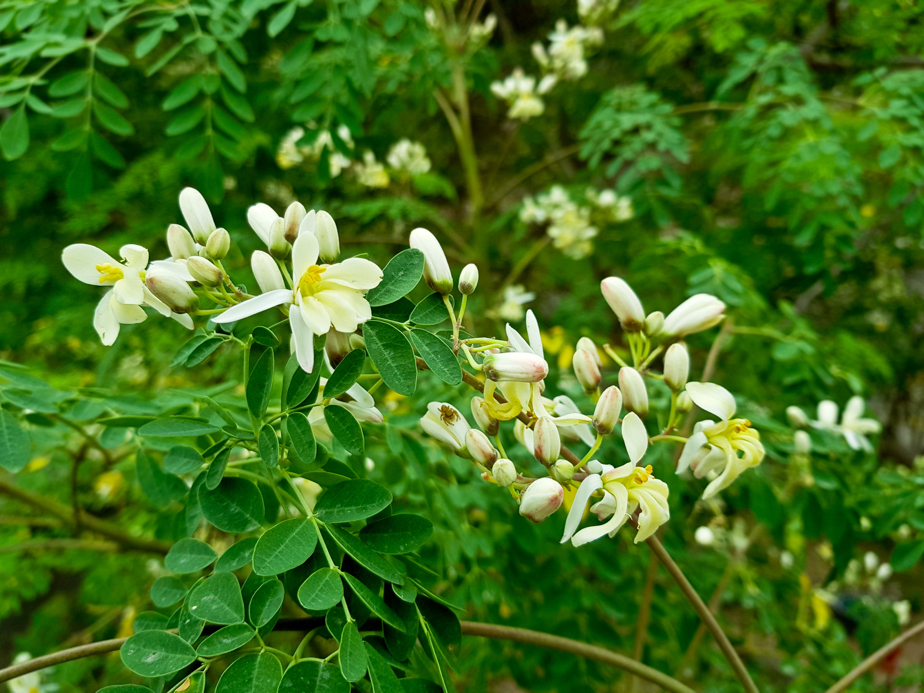
- BOTANICAL NAME: Moringa oleifera
- COMMON NAME(S): Ben Nut / Ben Oil Plant / Moringa
- HARDINESS RATING: H2
- FLOWERING SEASON(S): Summer / Autumn
- SUNLIGHT: Full Sun
- SOIL PREFERENCE: Clay, loam, sand; Acidic / Neutral pH
- EXPOSURE: Exposed / Sheltered
You can eat moringa leaves raw as well as in a range of other ways.
37) Musk Mallow
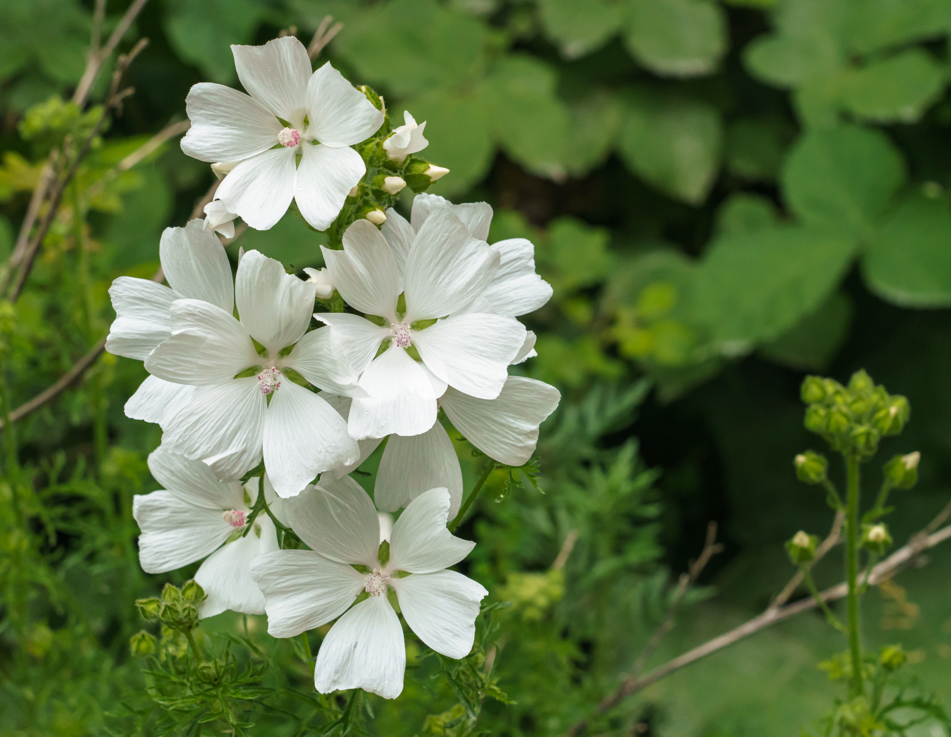
- BOTANICAL NAME: Malva moschata
- COMMON NAME(S): Musk Mallow
- HARDINESS RATING: H5
- FLOWERING SEASON(S): Summer / Autumn
- SUNLIGHT: Full Sun
- SOIL PREFERENCE: Any soil type; Any pH
- EXPOSURE: Exposed / Sheltered
Closely related to mallow as the name suggests, this species’ leaves can also be eaten raw or cooked.
38) Mustard Greens
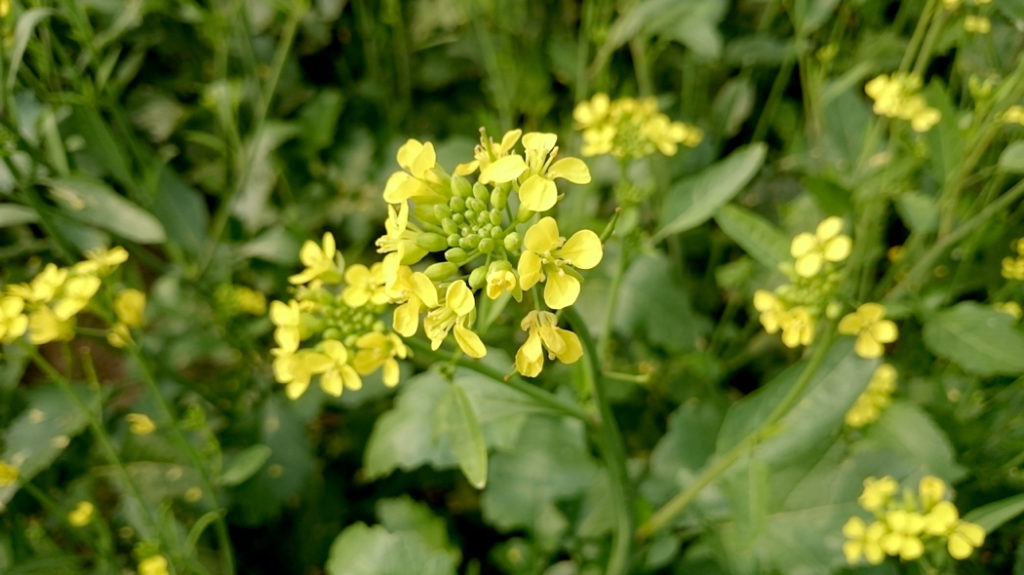
- BOTANICAL NAME: Brassica juncea
- COMMON NAME(S): Chinese Mustard / Mustard Greens
- HARDINESS RATING: H6
- FLOWERING SEASON(S): Summer / Autumn
- SUNLIGHT: Full Sun
- SOIL PREFERENCE: Any soil type; Alkaline / Neutral pH
- EXPOSURE: Exposed / Sheltered
Even though other uses of the plant are most common, boiling up a bunch of mustard greens is a tasty addition to any plate.
39) Napa Cabbage
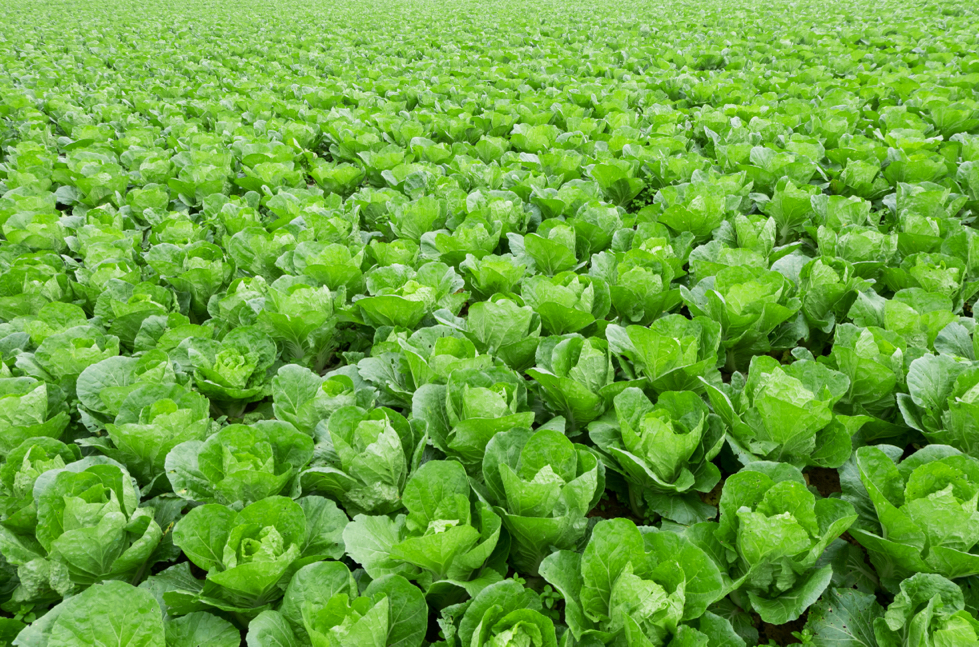
- BOTANICAL NAME: Brassica rapa subsp. pekinensis
- COMMON NAME(S): Napa Cabbage / Celery Cabbage
- HARDINESS RATING: H5
- FLOWERING SEASON(S): Summer
- SUNLIGHT: Full Sun / Part Shade
- SOIL PREFERENCE: Any soil type; Alkaline / Neutral pH
- EXPOSURE: Exposed / Sheltered
This cabbage grows frequently in China and is commonplace in their cuisine, and can often be found in imported vegetable aisles.
40) Orange Daylily
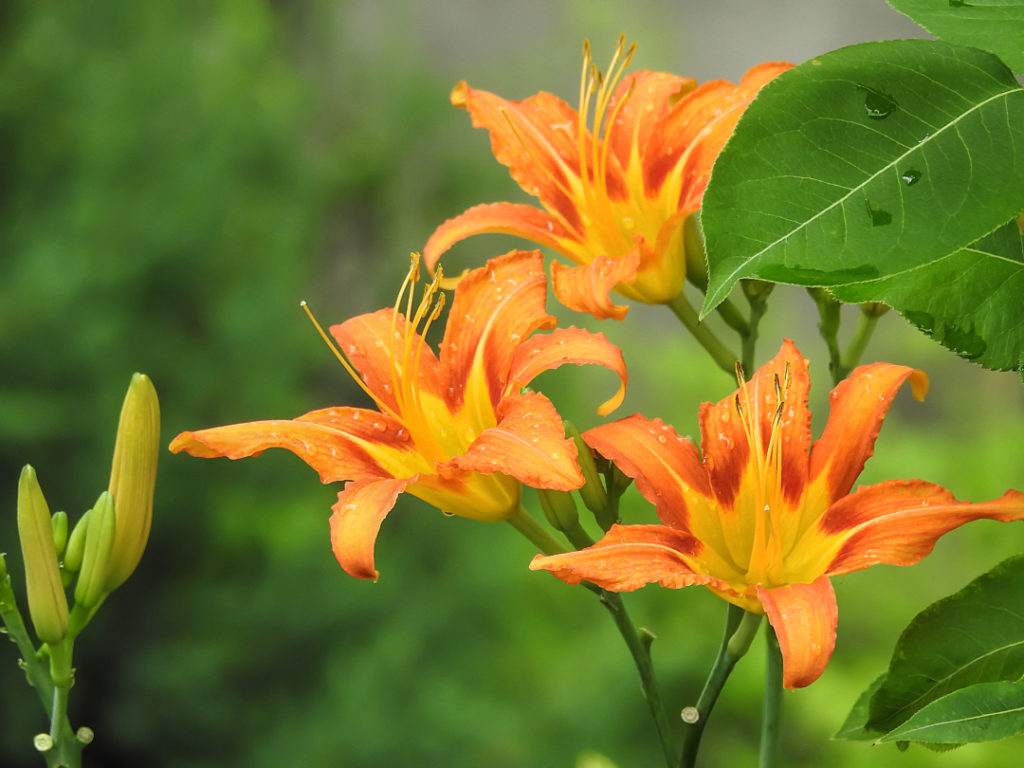
- BOTANICAL NAME: Hemerocallis fulva
- COMMON NAME(S): Common Orange Daylily / Eve’s Thread
- HARDINESS RATING: H7
- FLOWERING SEASON(S): Summer
- SUNLIGHT: Full Sun / Part Shade
- SOIL PREFERENCE: Any soil type; Any pH
- EXPOSURE: Exposed / Sheltered
While the most common part to eat is the flower, if you cut the outer leaves off, you can eat the more pleasant lily leaves inside.
41) Pak Choi
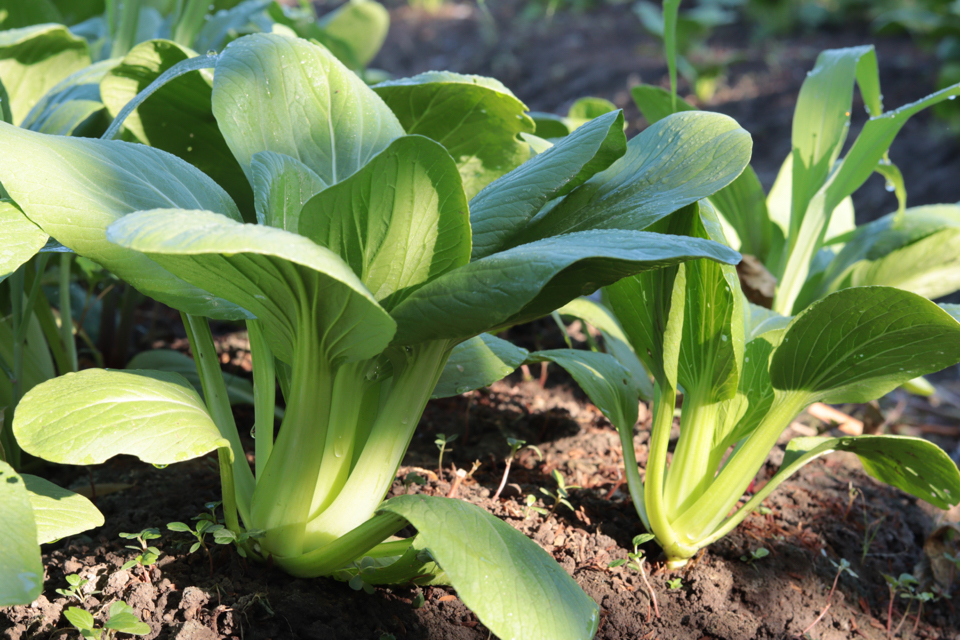
- BOTANICAL NAME: Brassica rapa subsp. chinensis
- COMMON NAME(S): Bok Choy / Pak Choi
- HARDINESS RATING: H3
- SUNLIGHT: Full Sun
- SOIL PREFERENCE: Chalk, loam, sand; Alkaline / Neutral pH
- EXPOSURE: Sheltered
This leaf is a good gateway ingredient when learning to cook Asian cuisine.
It’s readily available, easy to cook and, most importantly, delicious.
42) Palsingat
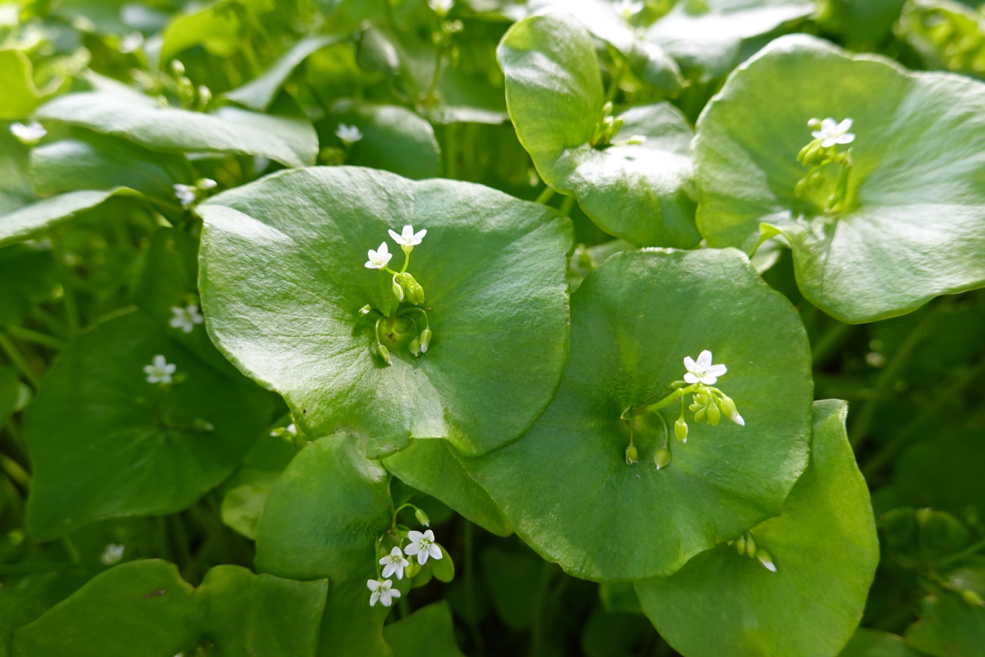
- BOTANICAL NAME: Claytonia perfoliata
- COMMON NAME(S): Miner’s Lettuce / Palsingat / Cuban Spinach
- HARDINESS RATING: H7
- FLOWERING SEASON(S): Spring / Summer
- SUNLIGHT: Full Sun
- SOIL PREFERENCE: Any soil type; Any pH
- EXPOSURE: Sheltered
This plant has lots of names: miner’s lettuce, spring beauty, winter purslane and others.
It was eaten by miners to prevent scurvy and can be used in cooking, but is not as flavourful as some greens.7Miner’s lettuce (Claytonia perfoliata). (n.d.). RikenMon’s Nature Guide. Retrieved March 20, 2023, from https://www.nature-guide.info/display/details.aspx?lang=en&id=1249
43) Pokeweed
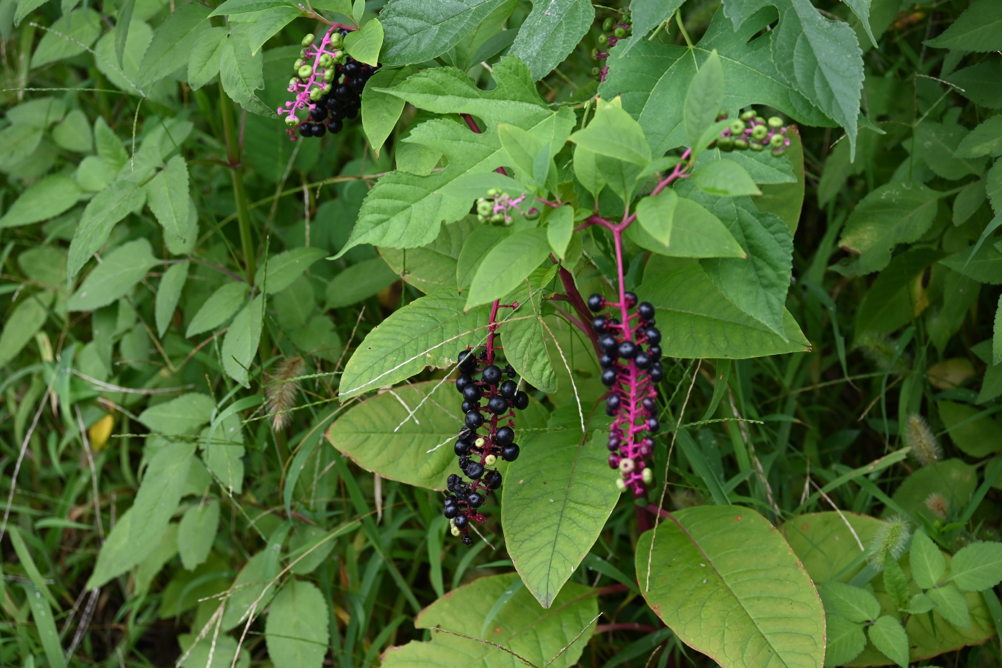
- BOTANICAL NAME: Phytolacca americana
- COMMON NAME(S): Pokeweed / American Nightshade
- HARDINESS RATING: H7
- FLOWERING SEASON(S): Summer / Autumn
- SUNLIGHT: Full Sun / Part Shade
- SOIL PREFERENCE: Chalk or loam; Any pH
- EXPOSURE: Sheltered
Be careful when eating pokeweed, as its berries should not be consumed!8Pokeweed. (n.d.). WebMD. Retrieved March 20, 2023, from https://www.webmd.com/vitamins/ai/ingredientmono-220/pokeweed
44) Quinoa
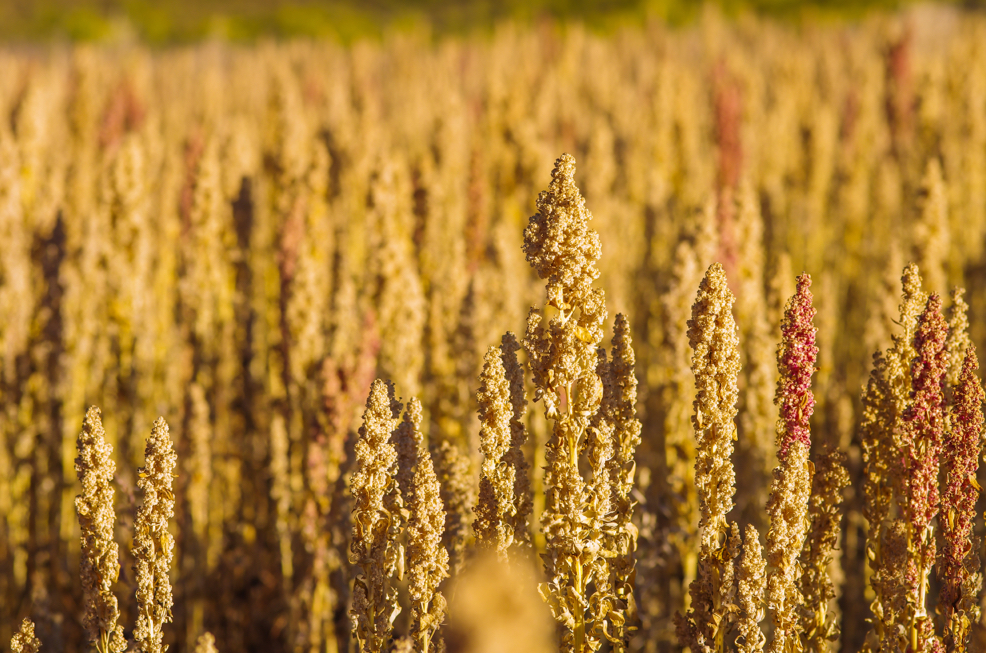
- BOTANICAL NAME: Chenopodium quinoa
- COMMON NAME(S): Puinoa
- HARDINESS RATING: H4
- FLOWERING SEASON(S): Summer / Autumn
- SUNLIGHT: Full Sun
- SOIL PREFERENCE: Chalk, loam, sand; Any pH
- EXPOSURE: Sheltered
Quinoa is most famous as a grain, but the leaves are edible as well.
45) Rapini

- BOTANICAL NAME: Brassica ruvo
- COMMON NAME(S): Rapini / Italian Broccoli
- HARDINESS RATING: H5
- FLOWERING SEASON(S): Summer / Autumn
- SUNLIGHT: Full Sun
- SOIL PREFERENCE: Any soil type; Alkaline / Neutral pH
- EXPOSURE: Exposed / Sheltered
This plant has bitter leaves which make it less popular than some other greens, but the leaves, buds and stems are all edible.
46) Red Cabbage
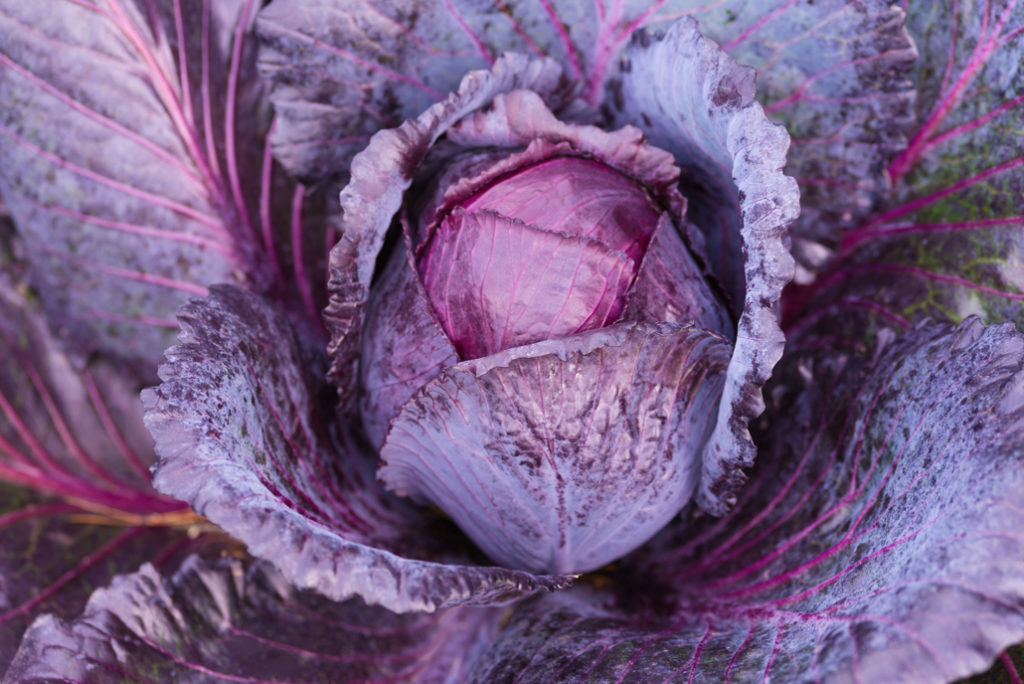
- BOTANICAL NAME: Brassica oleracea var. capitata f. rubra
- COMMON NAME(S): Red Cabbage
- HARDINESS RATING: H5
- SUNLIGHT: Full Sun / Part Shade
- SOIL PREFERENCE: Any soil type; Alkaline / Neutral pH
- EXPOSURE: Sheltered
You’ve probably seen red cabbage pickled in jars.
This leafy ‘green’ is versatile and tasty, despite the fact it isn’t actually green.
47) Red Leaf Lettuce
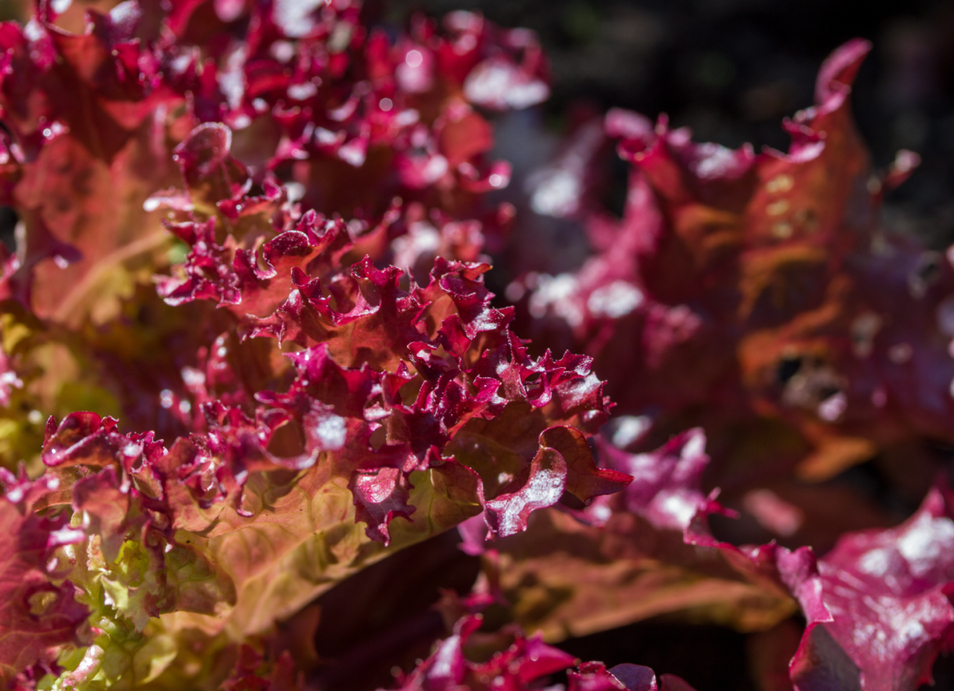
- BOTANICAL NAME: Lactuca sativa
- COMMON NAME(S): Red Leaf Lettuce
- HARDINESS RATING: H2
- FLOWERING SEASON(S): Summer
- SUNLIGHT: Full Sun
- SOIL PREFERENCE: Any soil type; Any pH
- EXPOSURE: Exposed / Sheltered
Another popular lettuce with many cultivars, you’ll recognise this veggie from supermarket salad mixes.
48) Rocket
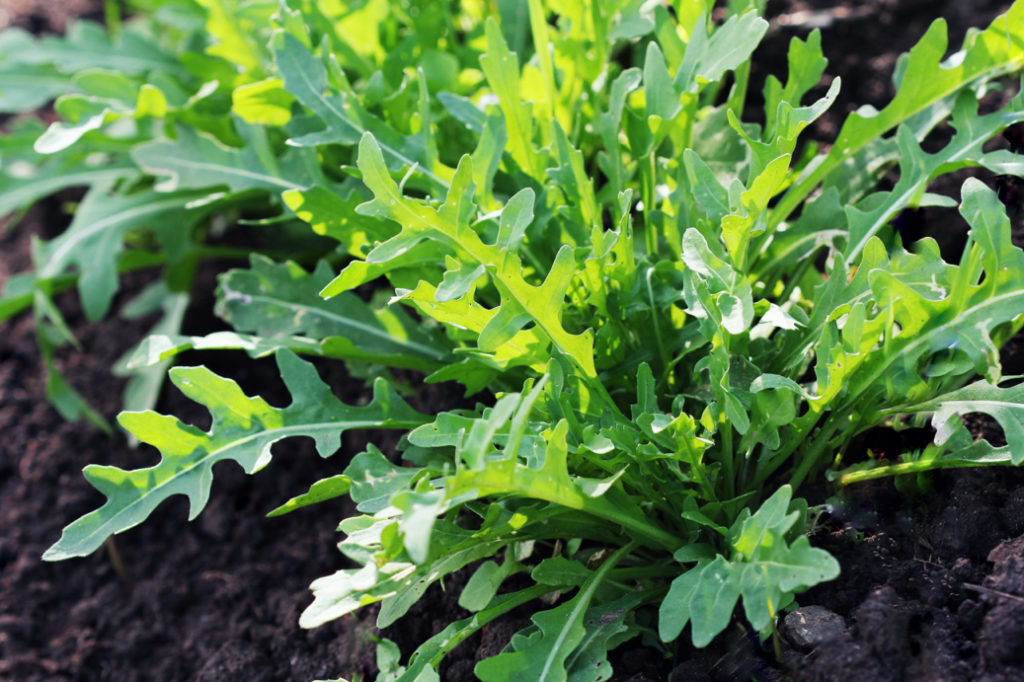
- BOTANICAL NAME: Eruca vesicaria subsp. sativa
- COMMON NAME(S): Garden rocket
- HARDINESS RATING: H4
- FLOWERING SEASON(S): Summer
- SUNLIGHT: Full Sun / Part Shade
- SOIL PREFERENCE: Any soil type; Any pH
- EXPOSURE: Exposed / Sheltered
Rocket’s peppery quality makes it a great addition to salads and dishes where you want to bring a bit of gentle heat and fire.
49) Romaine Lettuce
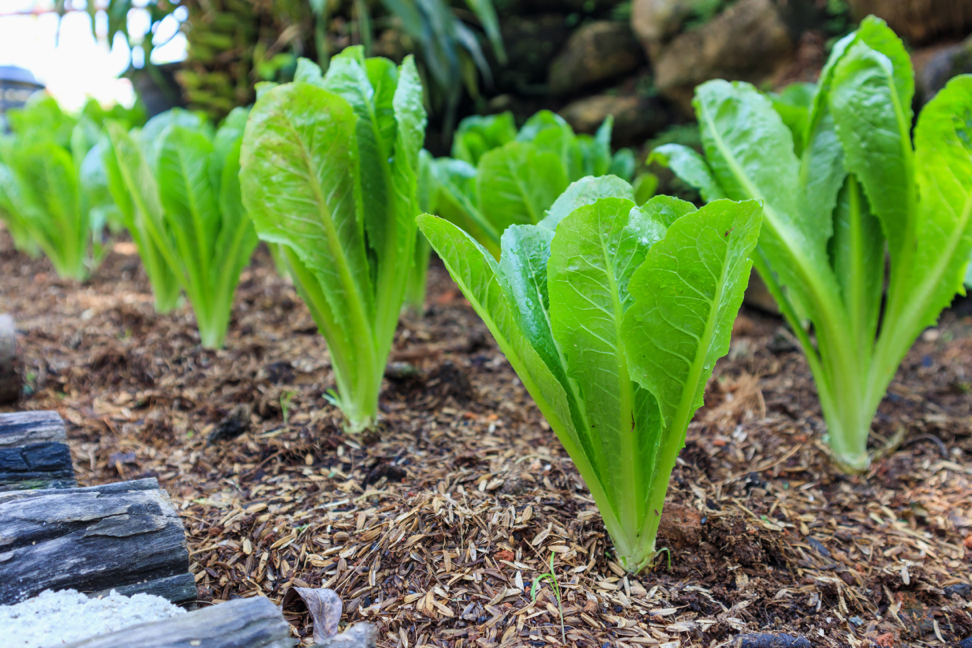
- BOTANICAL NAME: Lactuca sativa var. longifolia
- COMMON NAME(S): Romaine Lettuce / Cos
- HARDINESS RATING: H3
- SUNLIGHT: Full Sun / Part Shade
- SOIL PREFERENCE: Any soil type; Any pH
- EXPOSURE: Sheltered
Romaine lettuce, also called cos, is yet another popular lettuce variety that you’ll find in salads and other dishes.
50) Savoy Cabbage
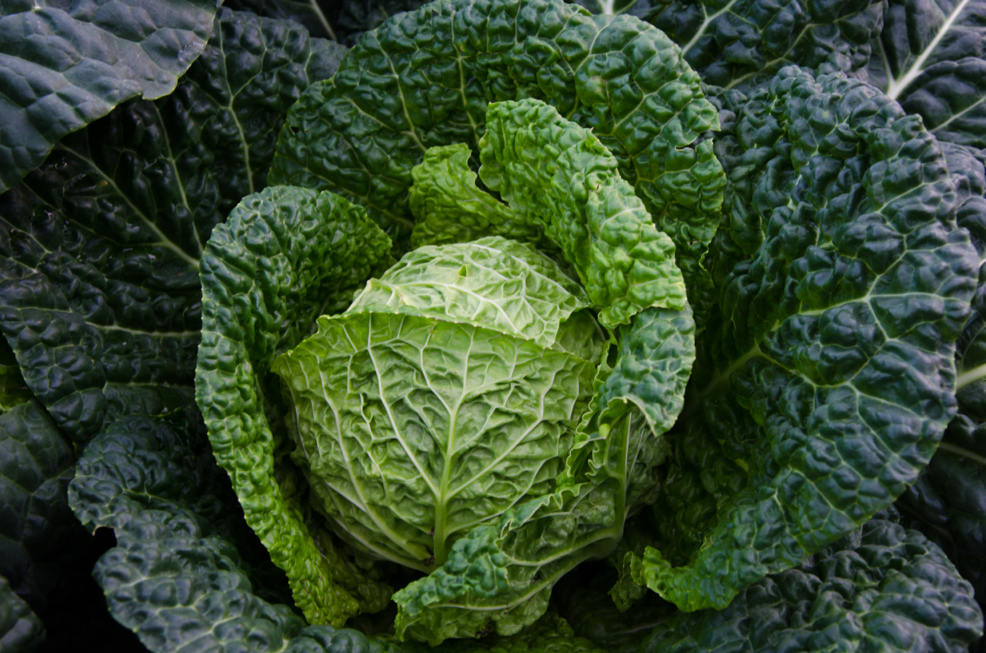
- BOTANICAL NAME: Brassica oleracea var. sabauda
- COMMON NAME(S): Savoy Cabbage
- HARDINESS RATING: H7
- FLOWERING SEASON(S): Summer / Autumn
- SUNLIGHT: Full Sun / Part Shade
- SOIL PREFERENCE: Any soil type; Alkaline / Neutral pH
- EXPOSURE: Exposed / Sheltered
Savoy can be eaten raw or cooked, although it’s definitely most popular cooked.
Boil or fry up with a bit of butter, and you’ll love it – I promise!
51) Shiso
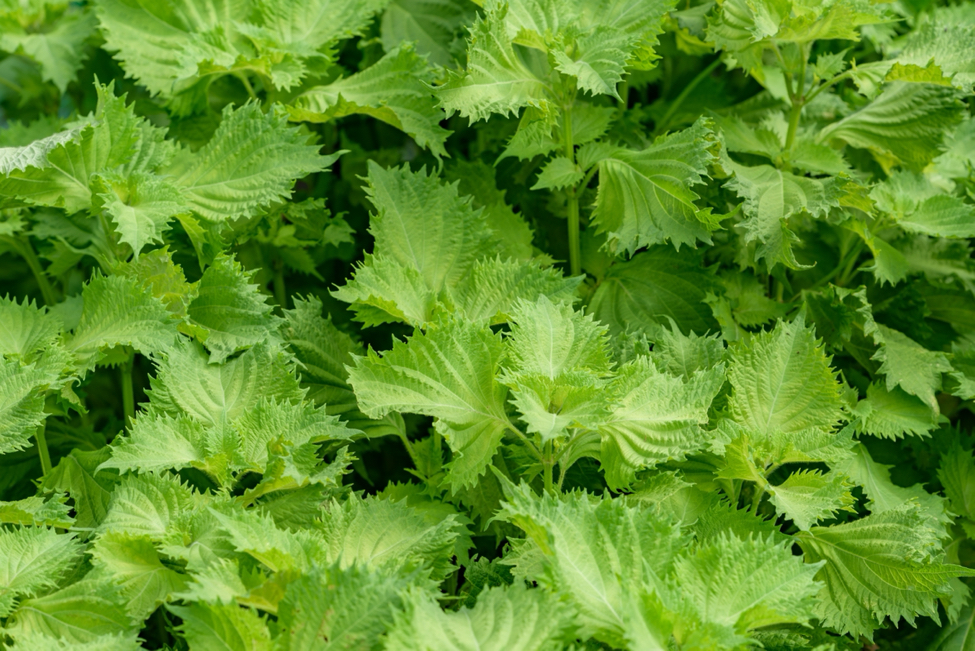
- BOTANICAL NAME: Perilla frutescens var. crispa
- COMMON NAME(S):Beefsteak Plant / Shiso / Curly Perilla
- HARDINESS RATING: H3
- FLOWERING SEASON(S): Summer
- SUNLIGHT: Full Sun / Part Shade
- SOIL PREFERENCE: Any soil type; Any pH
- EXPOSURE: Sheltered
Perilla frutescens is popular in Korean food.
52) Smooth Sowthistle

- BOTANICAL NAME: Sonchus oleraceus
- COMMON NAME(S): Common Sowthistle / Hare’s Coleswart
- HARDINESS RATING: H7
- SUNLIGHT: Full Sun
- SOIL PREFERENCE: Any soil type; Any pH
- EXPOSURE: Exposed / Sheltered
If you’re foraging, smooth sowthistle is a good thing to look out for as it’s a safe thing to eat.9Bonetto, D. (2020, May 12). How to identify and use sow thistle, the perfect edible weed. Wild Plants: Foraging, Food, Art and Culture. Retrieved March 20, 2023, from https://www.diegobonetto.com/blog/how-to-identify-and-use-sowthistle-the-perfect-edible-weed
53) Spinach
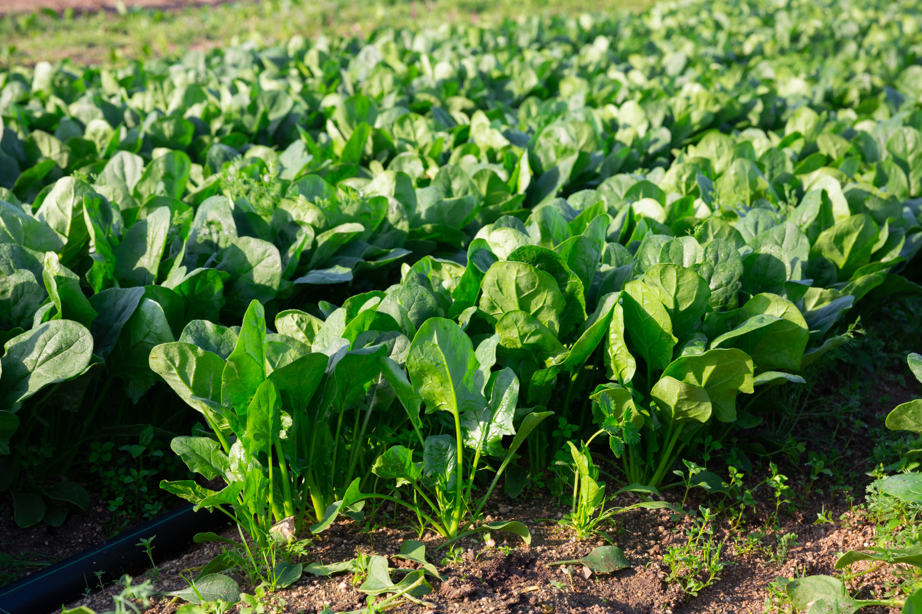
- BOTANICAL NAME: Spinacia oleracea
- COMMON NAME(S): Spinach
- HARDINESS RATING: H4
- SUNLIGHT: Full Sun / Part Shade
- SOIL PREFERENCE: Any soil type; Any pH
- EXPOSURE: Sheltered
A plant that needs no introduction, raw spinach leaves are great in salads, and cooked spinach goes with anything.
54) Sweet Violet
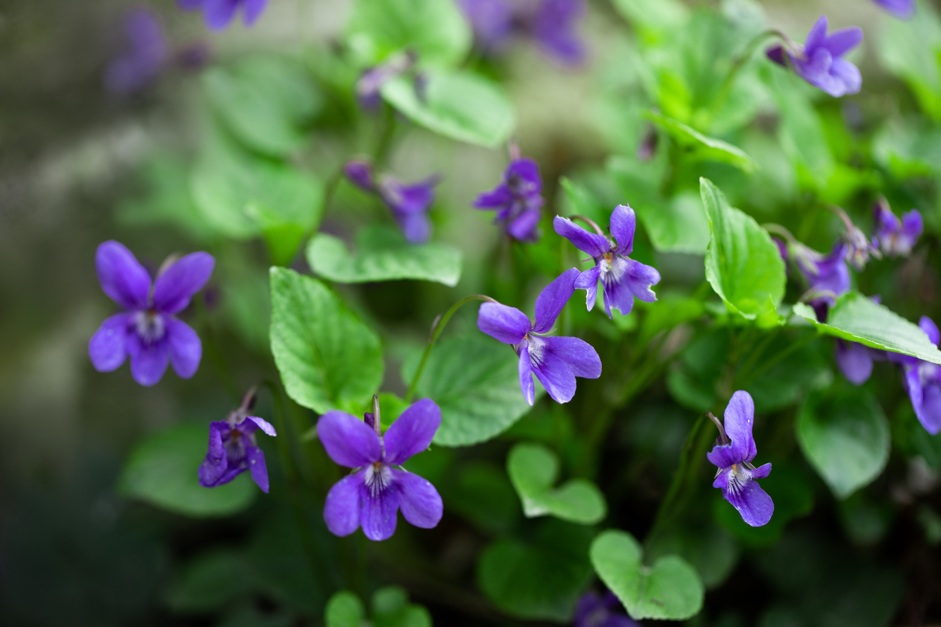
- BOTANICAL NAME: Viola odorata
- COMMON NAME(S): Sweet violet / English Violet
- HARDINESS RATING: H6
- FLOWERING SEASON(S): Winter / Spring
- SUNLIGHT: Full Sun / Part Shade
- SOIL PREFERENCE: Any soil type; Any pH
- EXPOSURE: Exposed / Sheltered
You can eat the flowers and the leaves of the violet plant.
Like nasturtiums, it’s always intriguing to see a flower on your plate!
55) Tatsoi
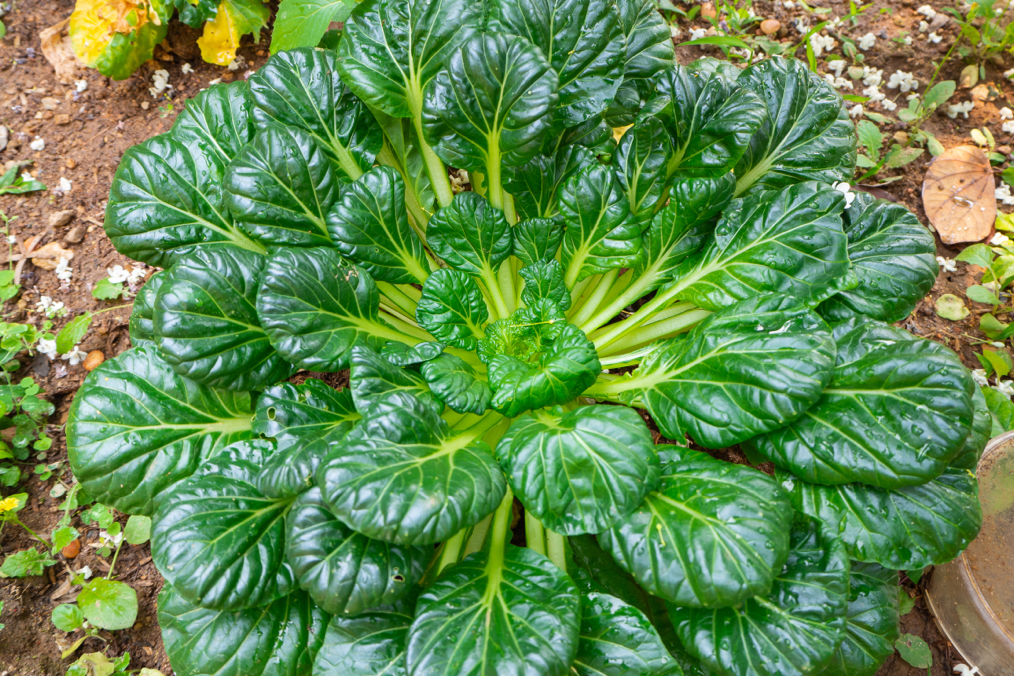
- BOTANICAL NAME: Brassica rapa subsp. narinosa
- COMMON NAME(S): Tatsoi / Rosette Pak Choi
- HARDINESS RATING: H5
- SUNLIGHT: Full Sun
- SOIL PREFERENCE: Any soil type; Alkaline / Neutral pH
- EXPOSURE: Exposed / Sheltered
Here’s another Asian variety of brassica, closely related to the popular pak choi.
These dark green leaves can be eaten raw or cooked.
56) Turnip

- BOTANICAL NAME: Brassica rapa subsp. rapa
- COMMON NAME(S): Turnip
- HARDINESS RATING: H6
- SUNLIGHT: Full Sun
- SOIL PREFERENCE: Any soil type; Alkaline / Neutral pH
- EXPOSURE: Exposed / Sheltered
Everyone’s tried a turnip, usually with a roast, but did you know you could also eat the leaves?10Ware, M. (2017, May 18). Everything you need to know about turnip greens. Medical News Today. Retrieved March 20, 2023, from https://www.medicalnewstoday.com/articles/285961
Fry up with a bit of oil for the best taste.
57) Welsh Onion
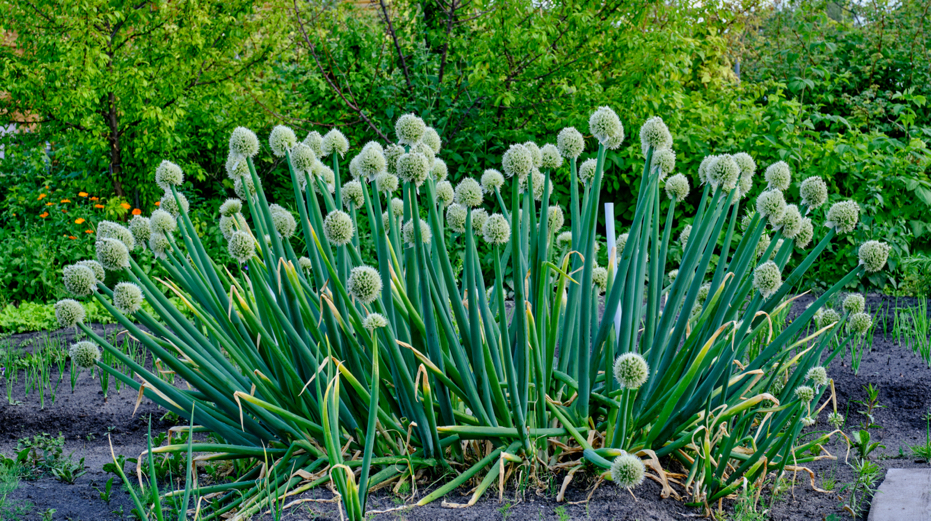
- BOTANICAL NAME: Allium fistulosum
- COMMON NAME(S): Welsh Onion / Ciboul
- HARDINESS RATING: H3
- FLOWERING SEASON(S): Summer
- SUNLIGHT: Full Sun / Part Shade
- SOIL PREFERENCE: Any soil type; Any pH
- EXPOSURE: Exposed / Sheltered
The leaves of the Welsh onion are edible raw or cooked and, as you might expect, have a gentle oniony flavour.
Great when you want something more subtle than actual onion.
58) Wild Leeks
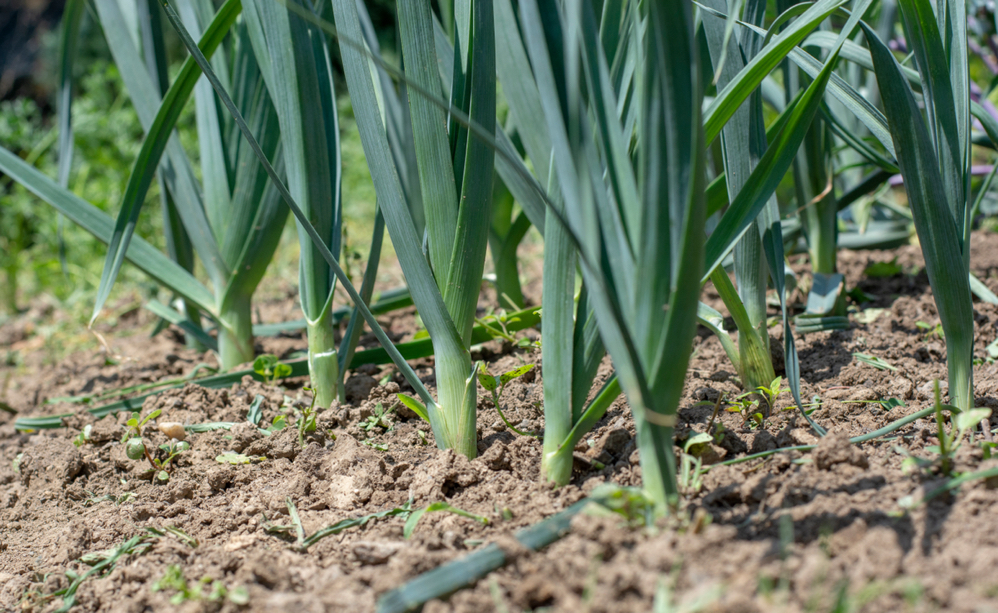
- BOTANICAL NAME: Allium porrum
- COMMON NAME(S): Leek / Wild Leek / St. David’s Lily
- HARDINESS RATING: H4
- FLOWERING SEASON(S): Summer
- SUNLIGHT: Full Sun / Part Shade
- SOIL PREFERENCE: Any soil type; Any pH
- EXPOSURE: Exposed / Sheltered
You can eat the leaves of a wild leek as well as the bit we’d usually consider the leaf.
Take care when harvesting as the plant has a long growth cycle that you can unintentionally disrupt.
59) Wild sorrel
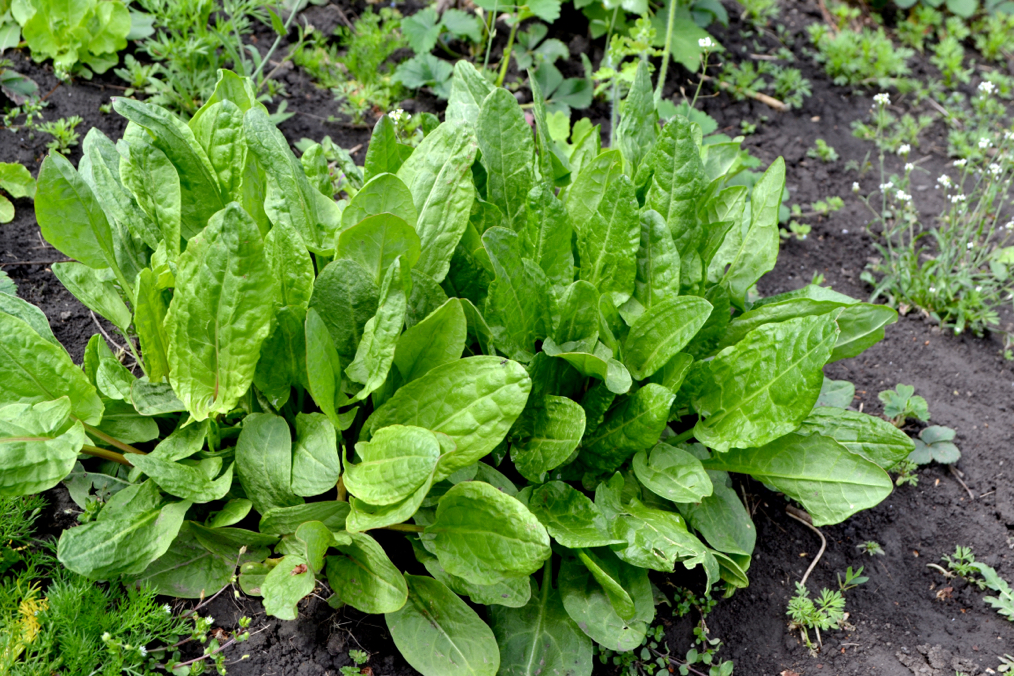
- BOTANICAL NAME: Rumex acetosa
- COMMON NAME(S): Sorrel / Wild sorrel
- HARDINESS RATING: H7
- FLOWERING SEASON(S): Summer
- SUNLIGHT: Full Sun / Part Shade
- SOIL PREFERENCE: Chalk, loam, sand; Acidic / Neutral pH
- EXPOSURE: Exposed / Sheltered
Sorrel has a flavour slightly reminiscent of citrus, making it a great way to bring a fresh zesty dimension to salads and dishes when used as a garnish.
The 59 greens in this list are a great sampling of the leafy greens available, and we recommend investigating recipes for the ones that pique your interest.
Who knows – maybe you’ll find your new favourite ingredient!
References
- 1Amaranth – May Grain of the Month. (n.d.). The Whole Grains Council. Retrieved March 20, 2023, from https://wholegrainscouncil.org/whole-grains-101/grain-month-calendar/amaranth-may-grain-month
- 2Anderson, P. (2019, October 12). Cooking with celtuce: the supermodel of vegetables. The Guardian. Retrieved March 20, 2023, from https://www.theguardian.com/food/2019/oct/13/cooking-with-celtuce-the-supermodel-of-vegetables
- 3Chaya – High Nutrition Perennial. (n.d.). US Aid. Retrieved March 20, 2023, from https://pdf.usaid.gov/pdf_docs/PA00K93C.pdf
- 4Brooks Vinton, S. (2018, August 28). How to Eat Dandelions. FoodPrint. Retrieved March 20, 2023, from https://foodprint.org/blog/how-to-eat-dandelions/
- 5Katuk. (2015). FGCU Food Forest: Plant Database. Retrieved March 20, 2023, from https://www.fgcu.edu/cas/communityimpact/foodforest/files/katuk-ada.pdf
- 6Lamb’s Quarters and Orach. (2021, March 31). FoodPrint. Retrieved March 20, 2023, from https://foodprint.org/real-food/lambs-quarters/
- 7Miner’s lettuce (Claytonia perfoliata). (n.d.). RikenMon’s Nature Guide. Retrieved March 20, 2023, from https://www.nature-guide.info/display/details.aspx?lang=en&id=1249
- 8Pokeweed. (n.d.). WebMD. Retrieved March 20, 2023, from https://www.webmd.com/vitamins/ai/ingredientmono-220/pokeweed
- 9Bonetto, D. (2020, May 12). How to identify and use sow thistle, the perfect edible weed. Wild Plants: Foraging, Food, Art and Culture. Retrieved March 20, 2023, from https://www.diegobonetto.com/blog/how-to-identify-and-use-sowthistle-the-perfect-edible-weed
- 10Ware, M. (2017, May 18). Everything you need to know about turnip greens. Medical News Today. Retrieved March 20, 2023, from https://www.medicalnewstoday.com/articles/285961
